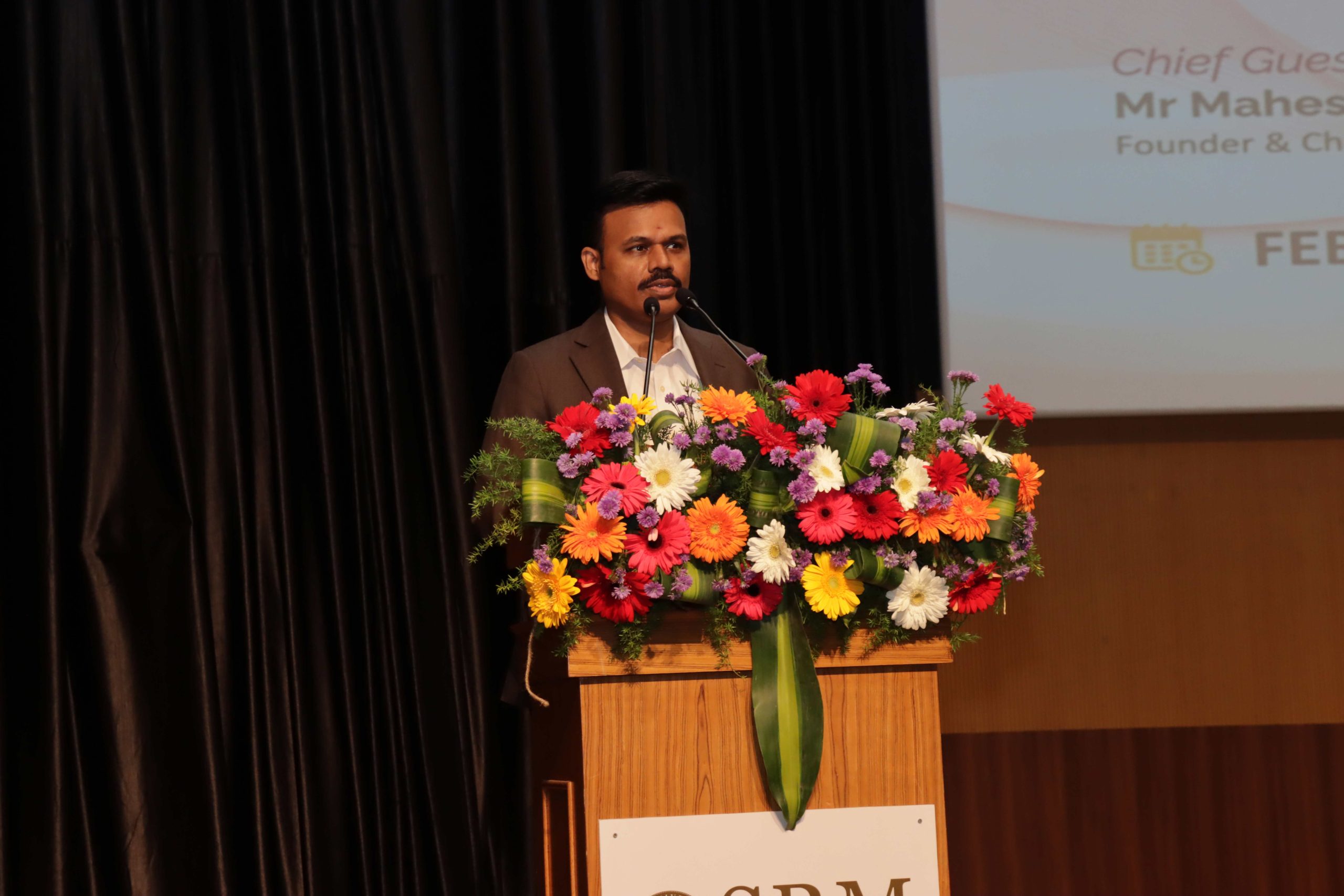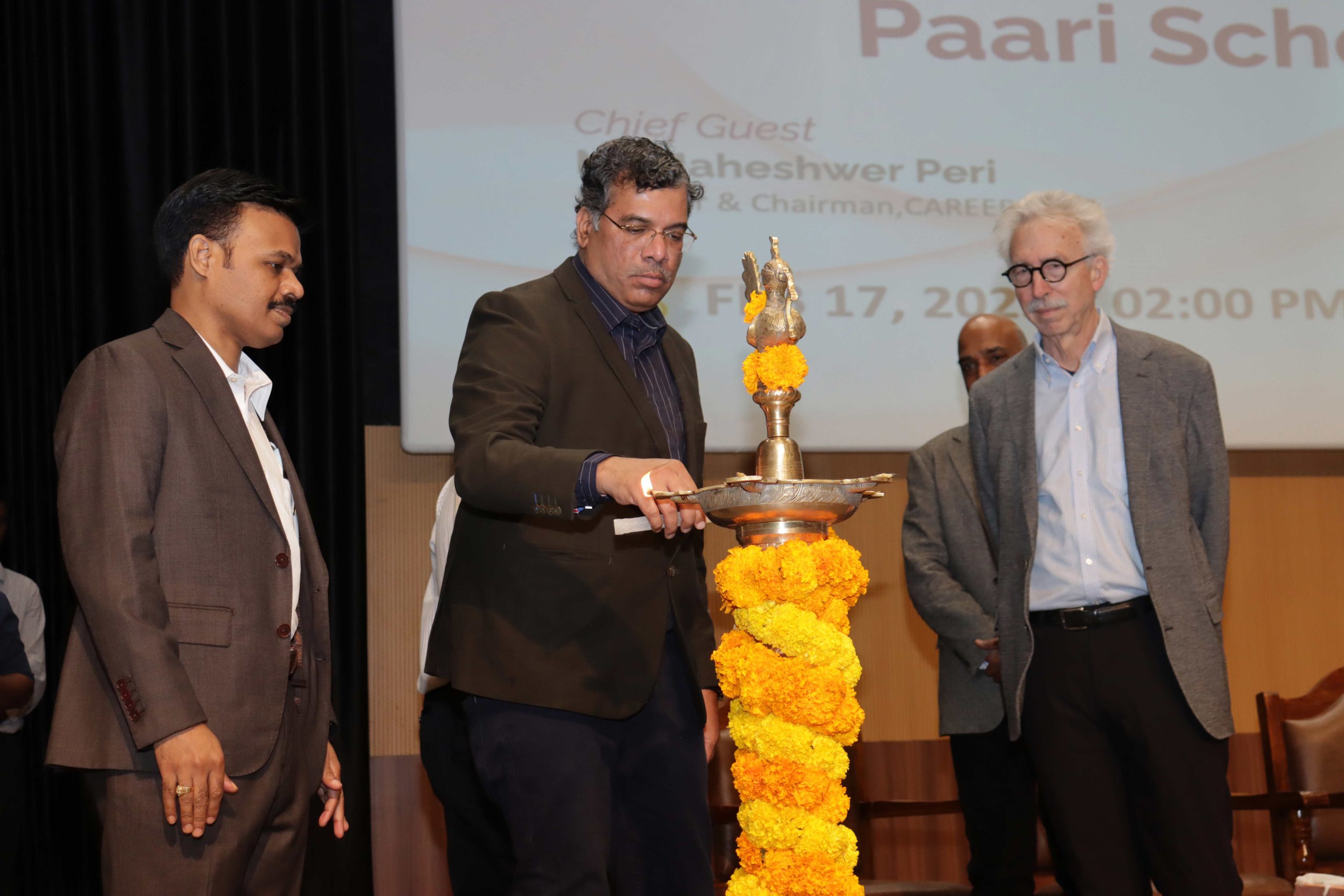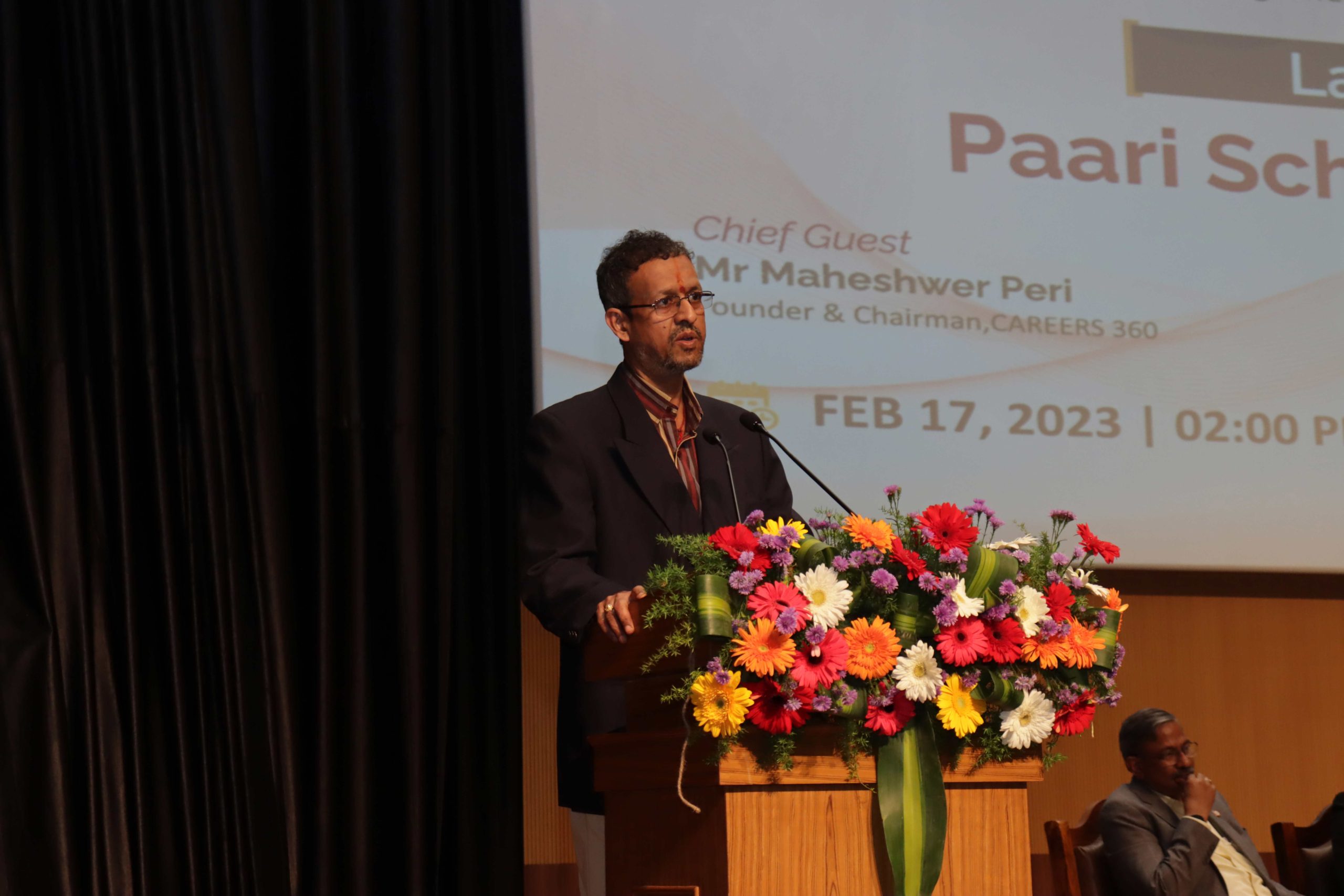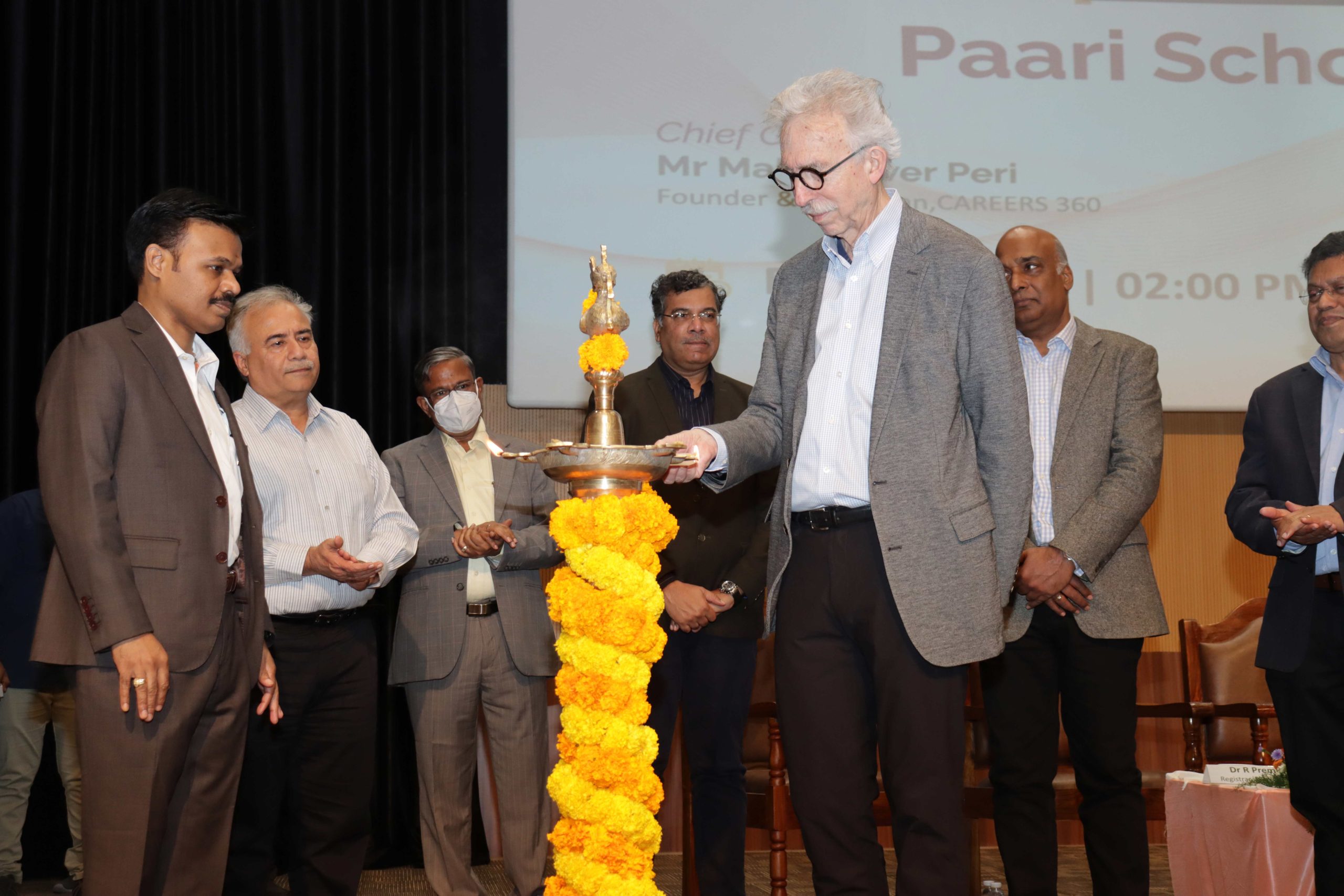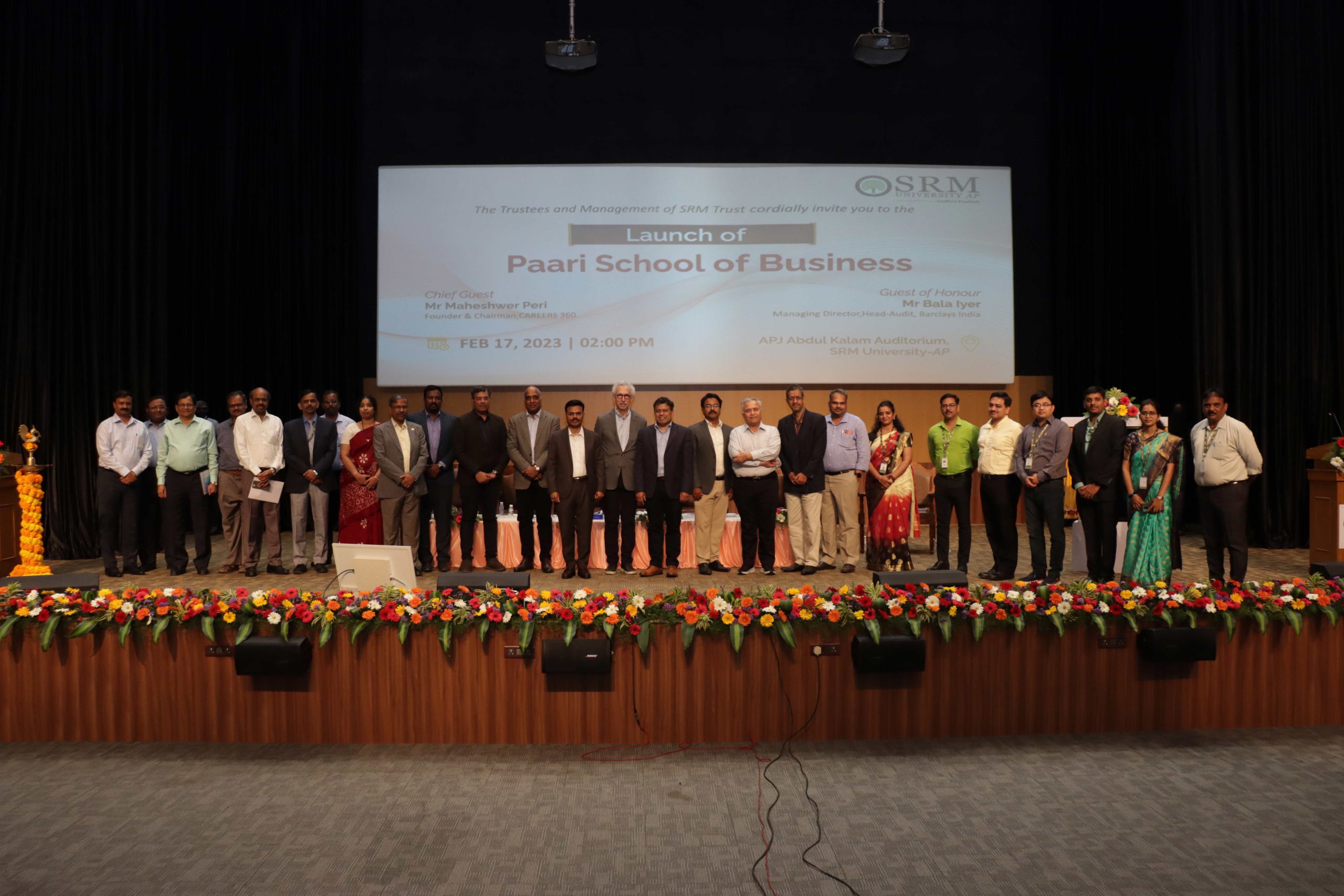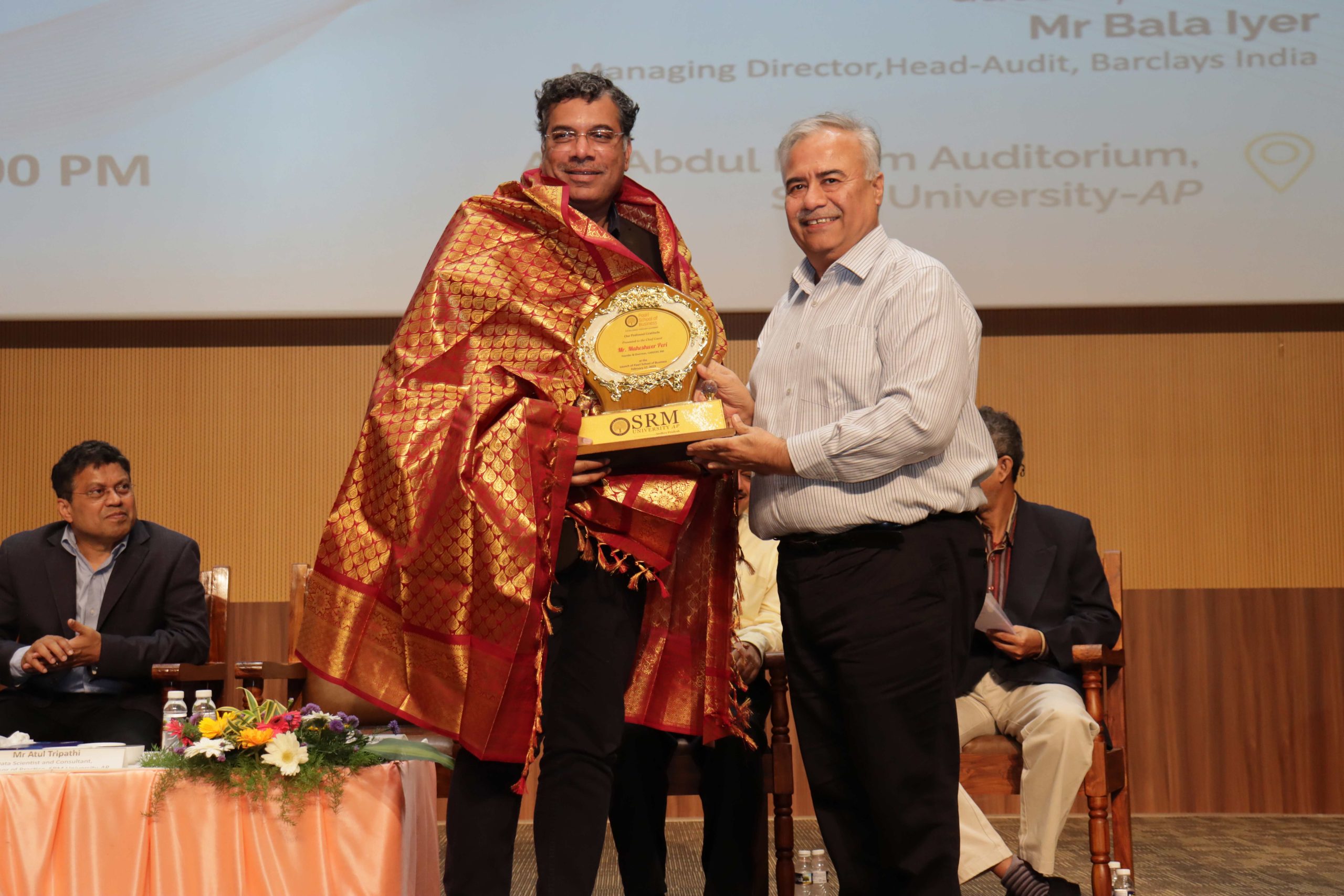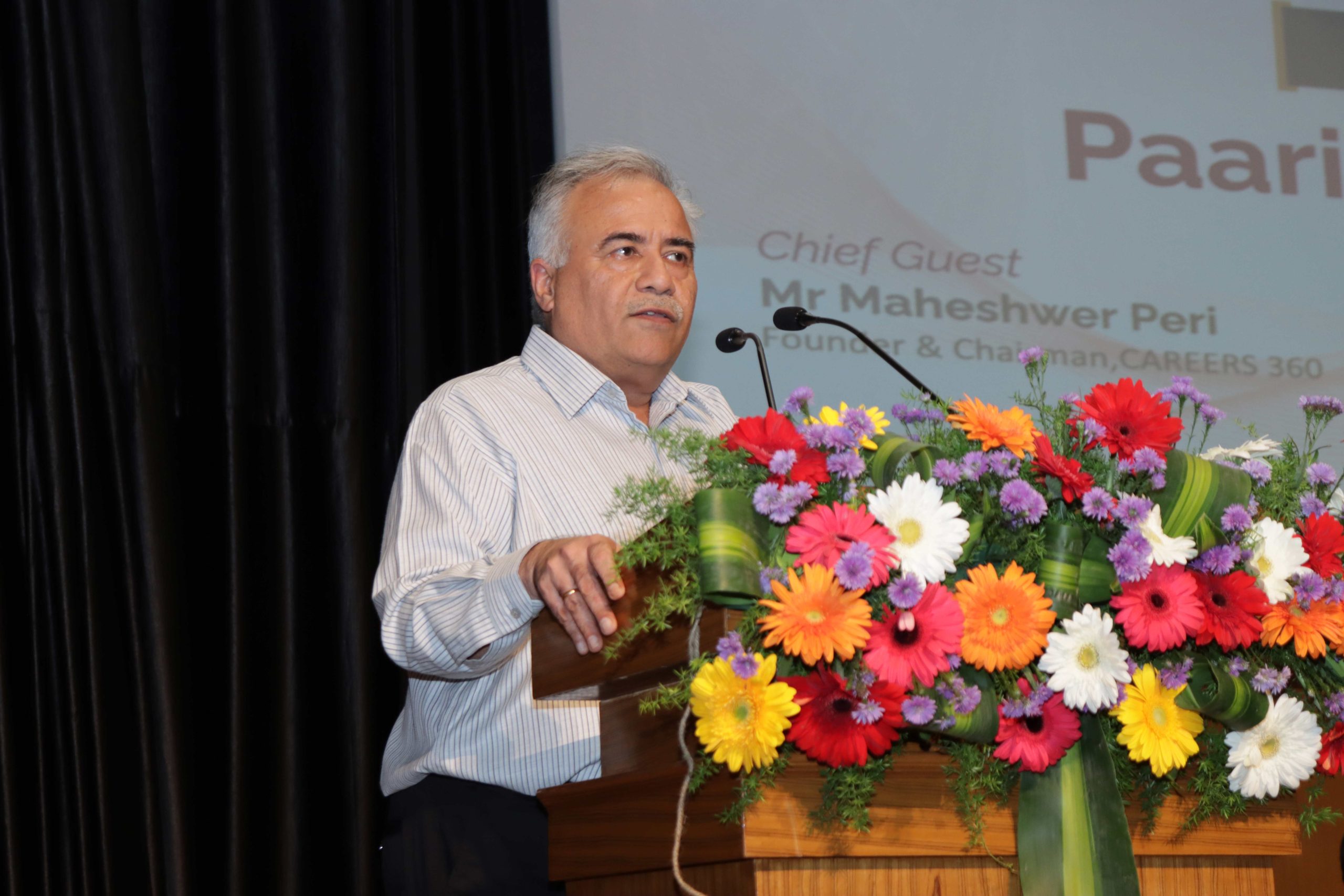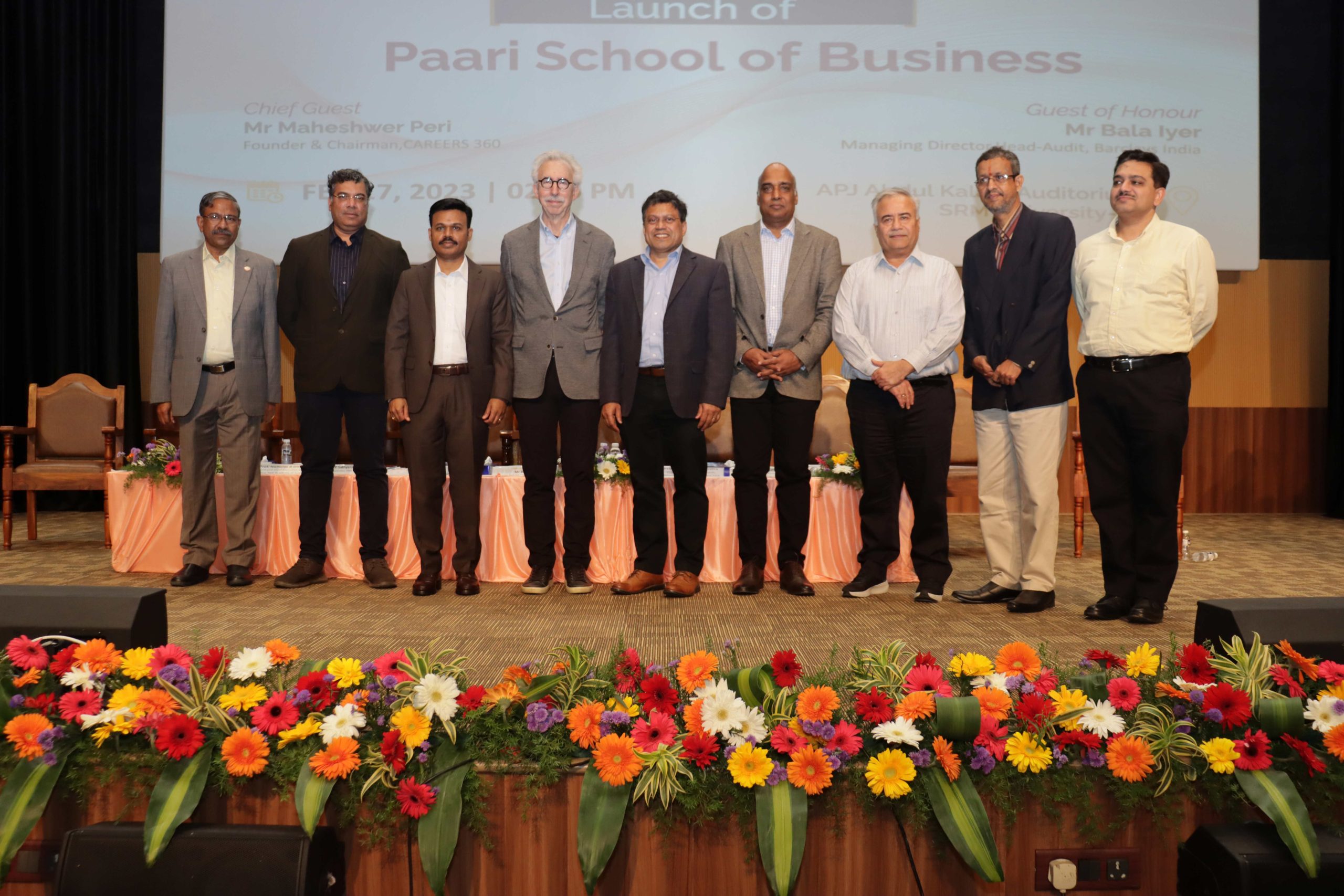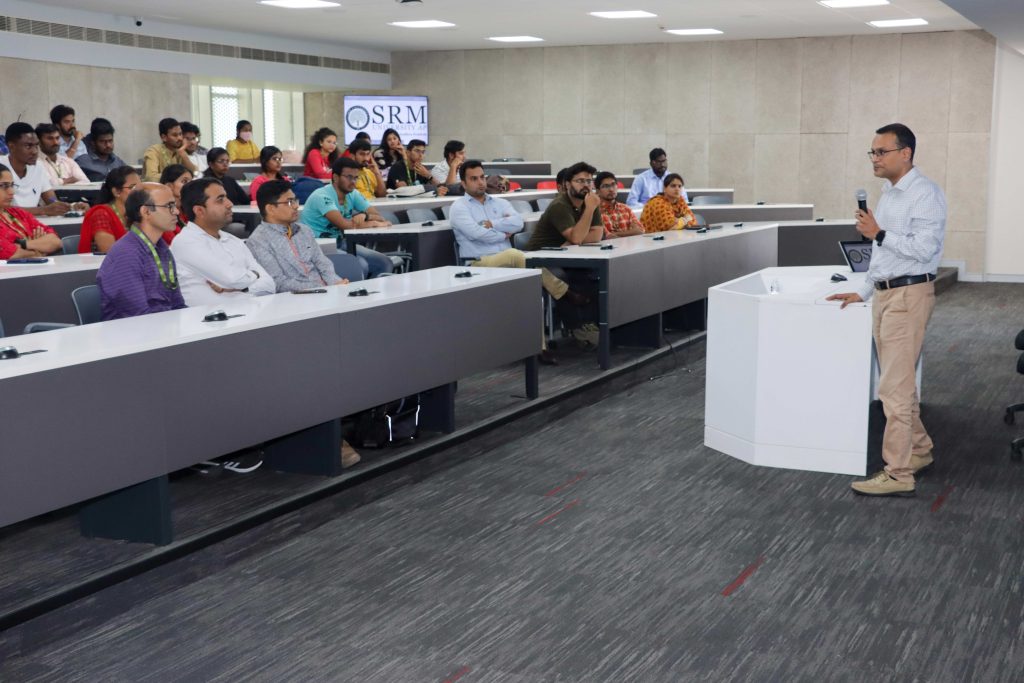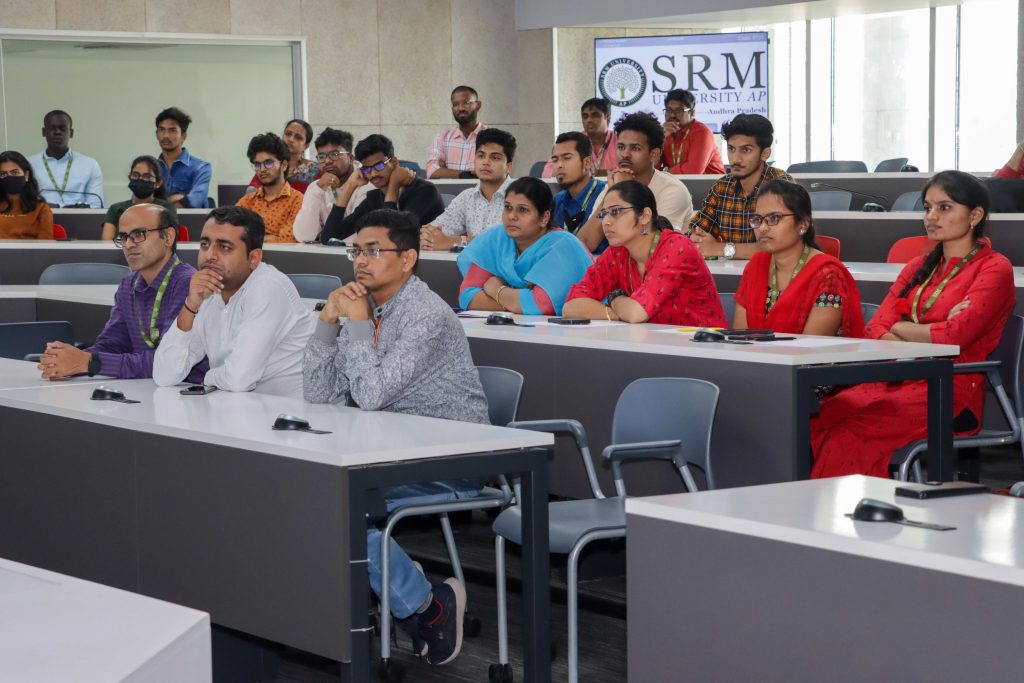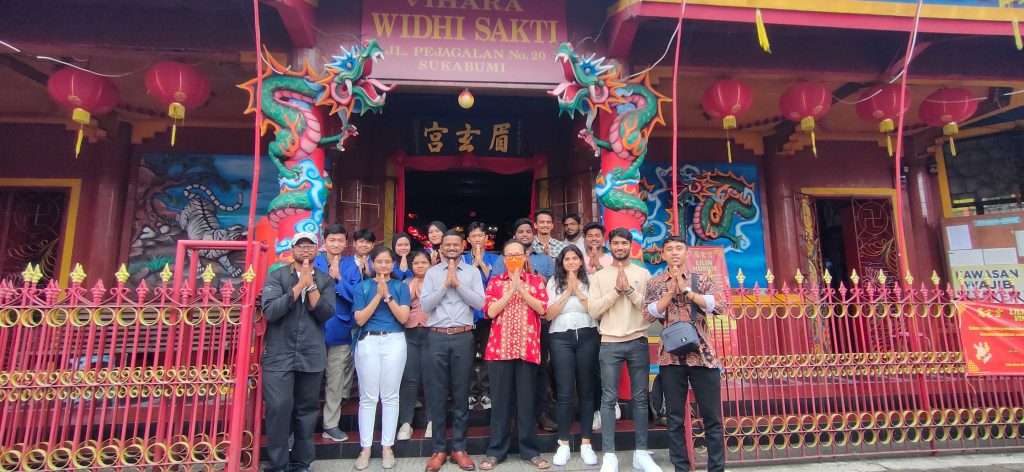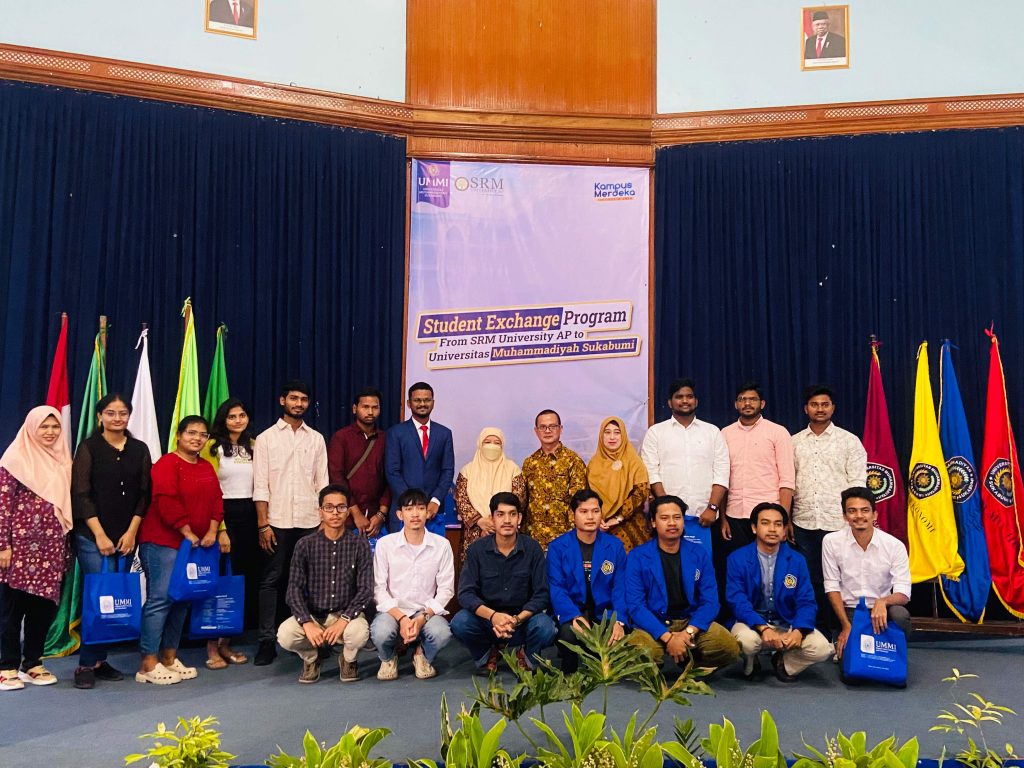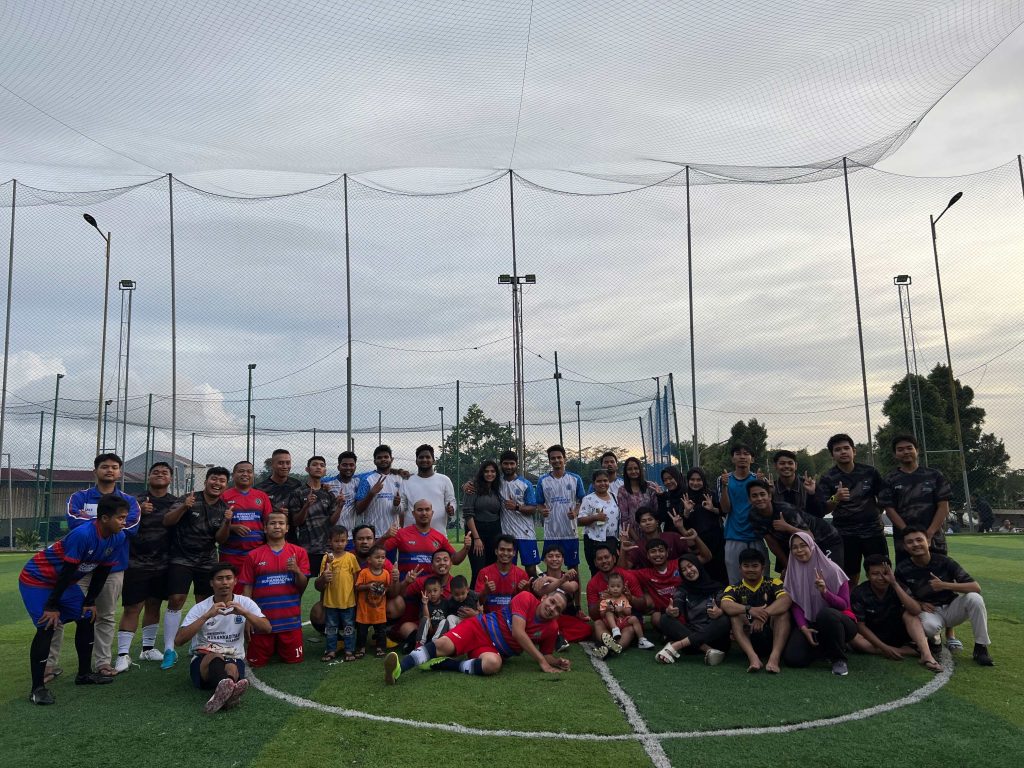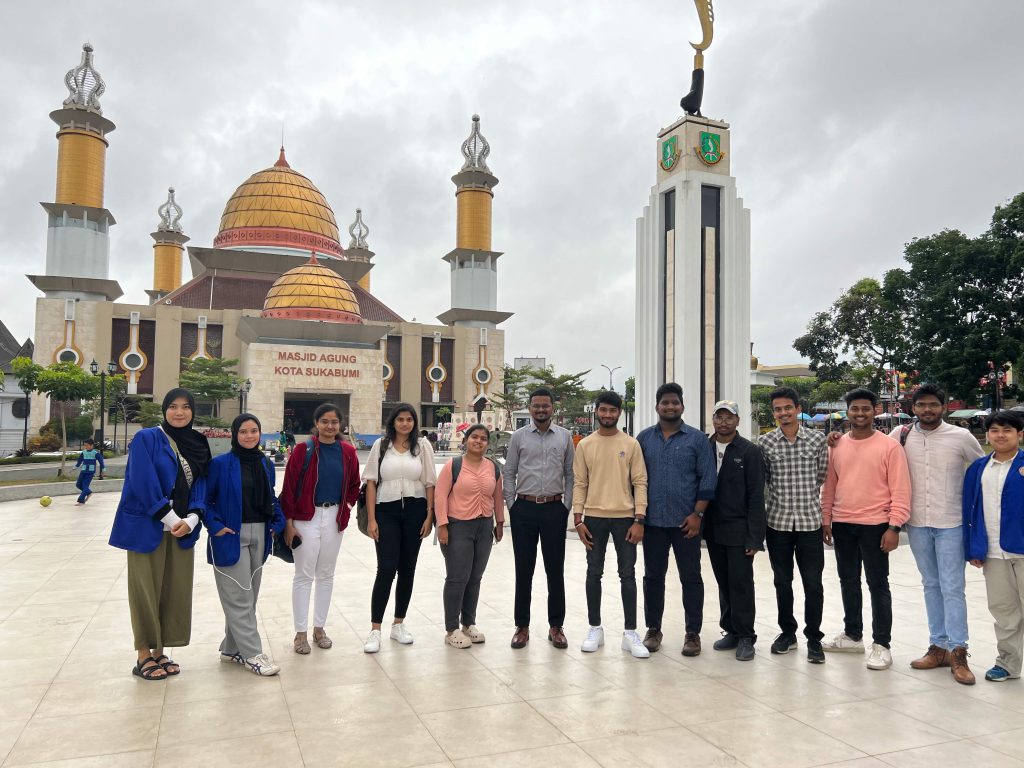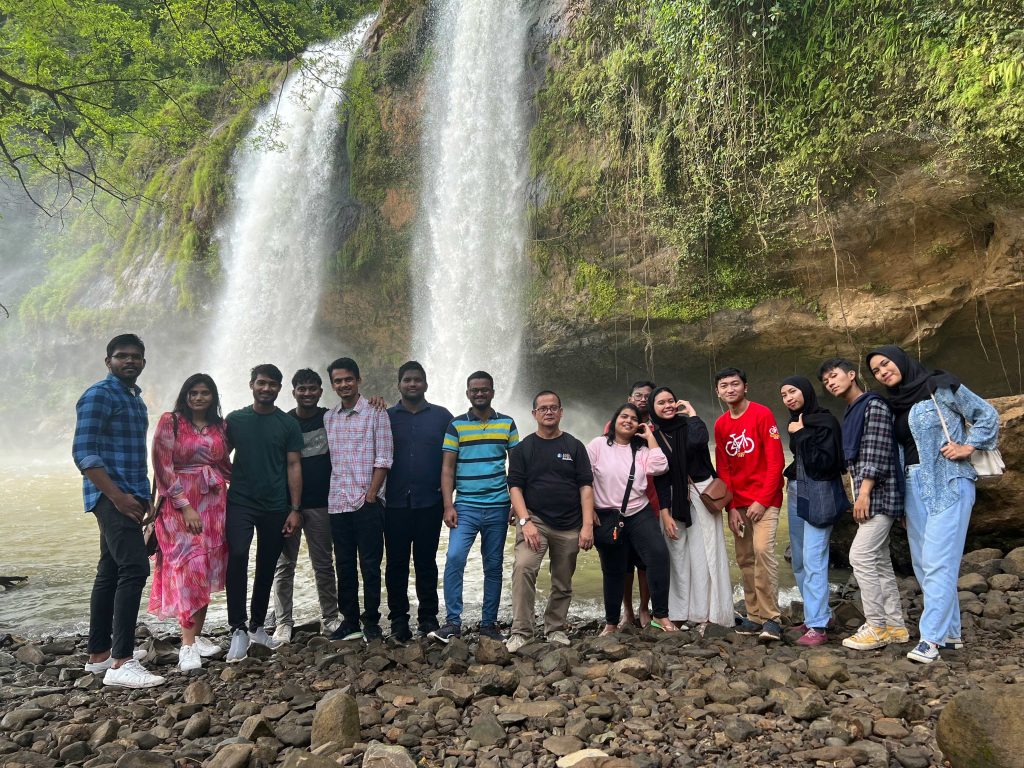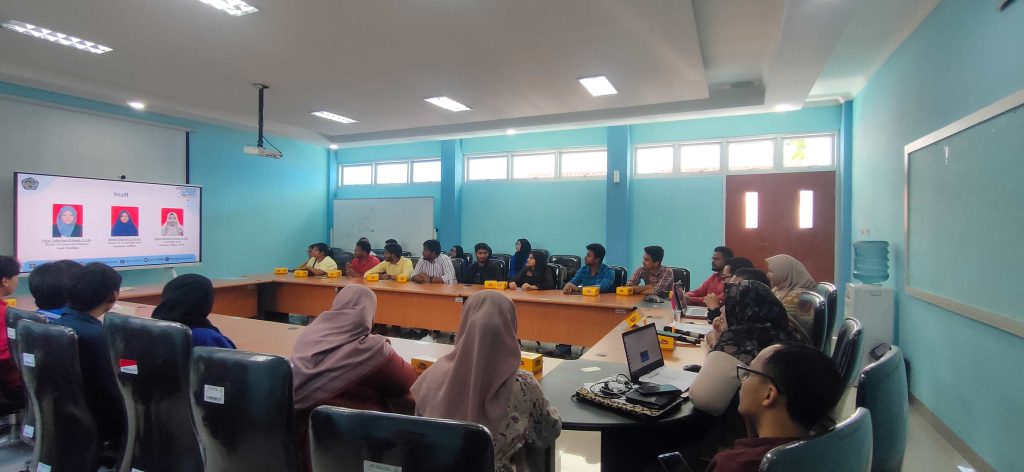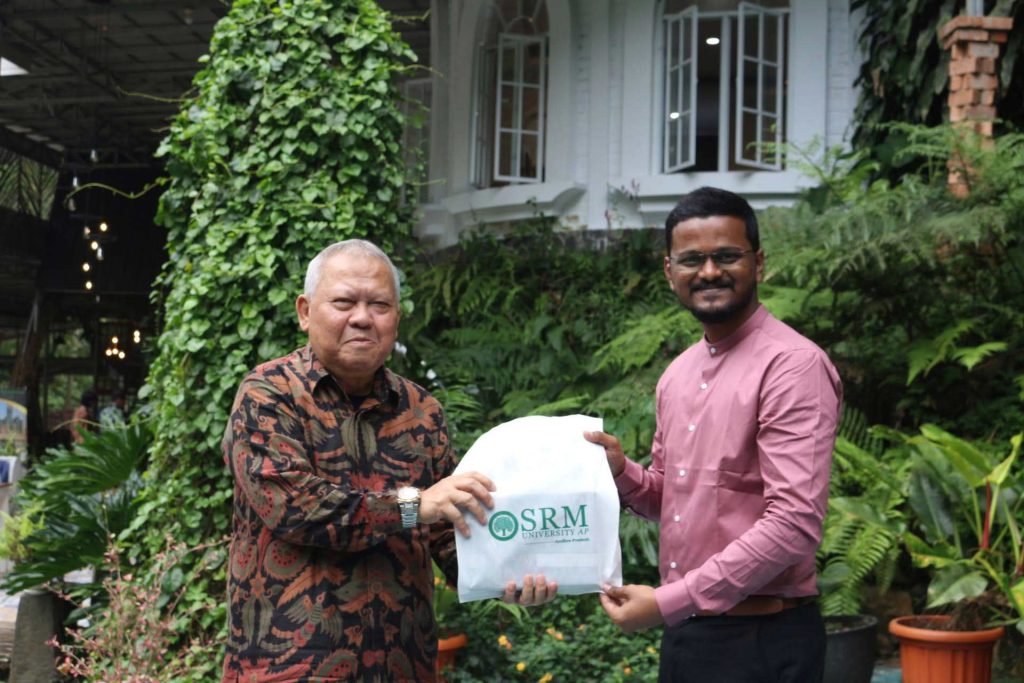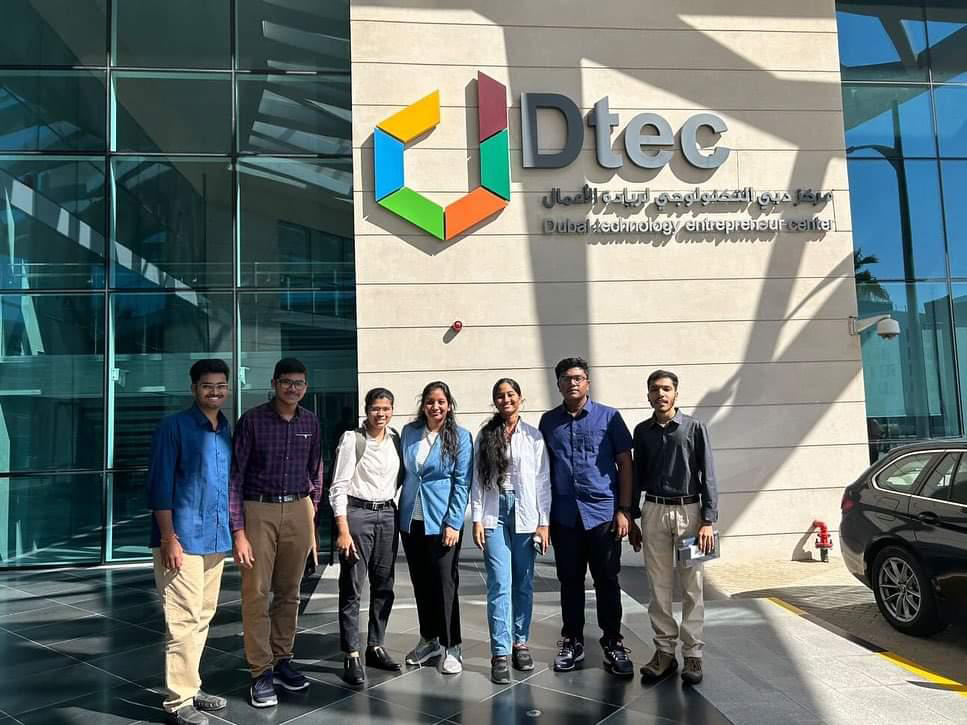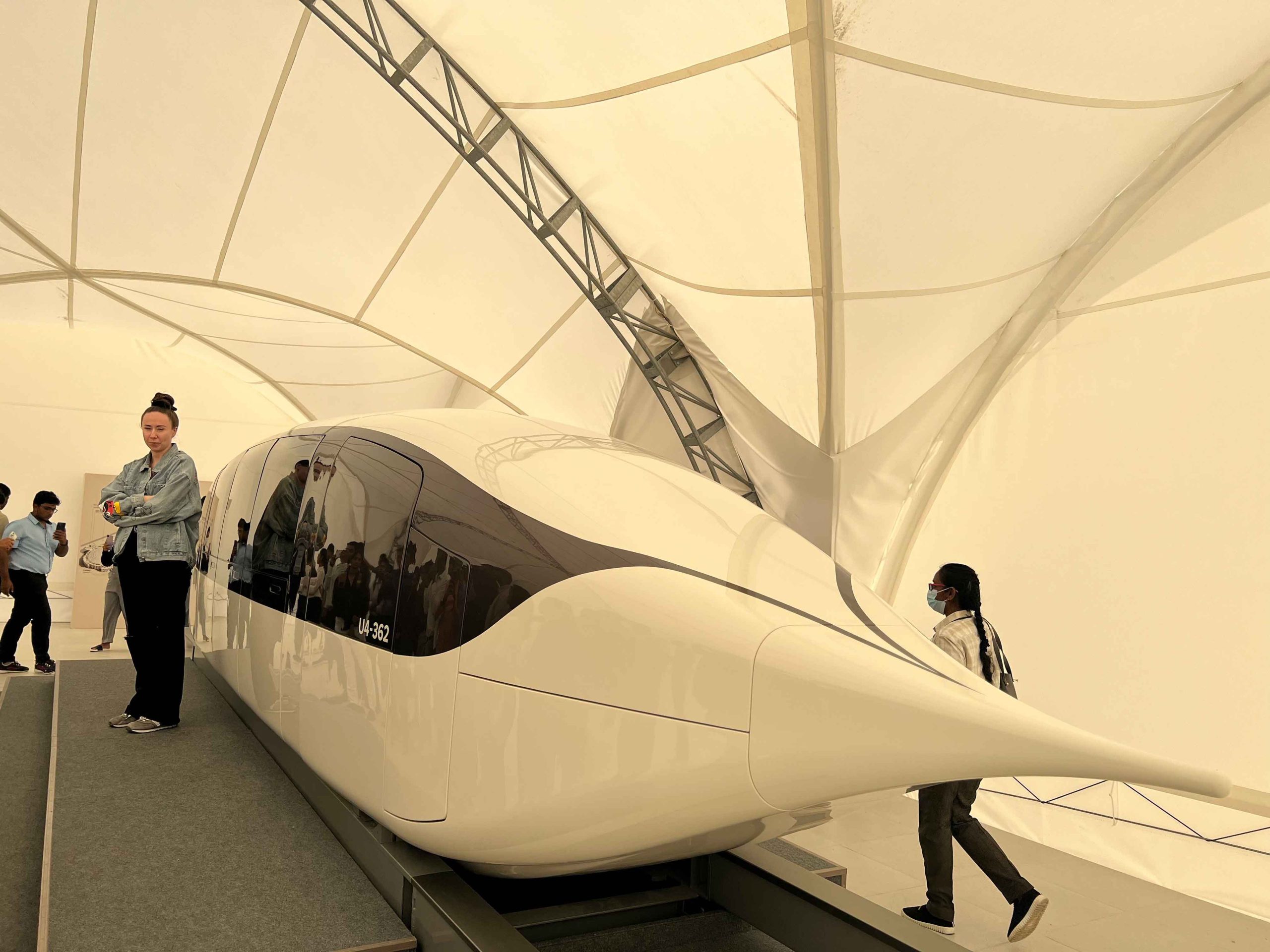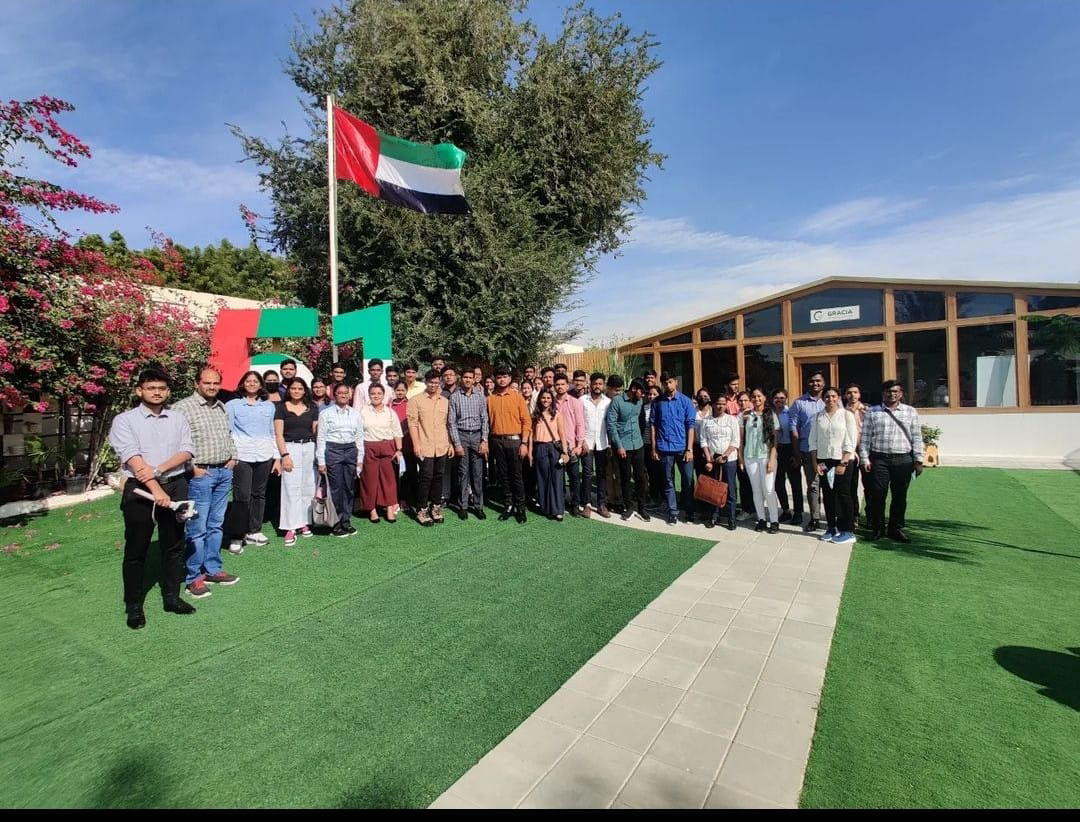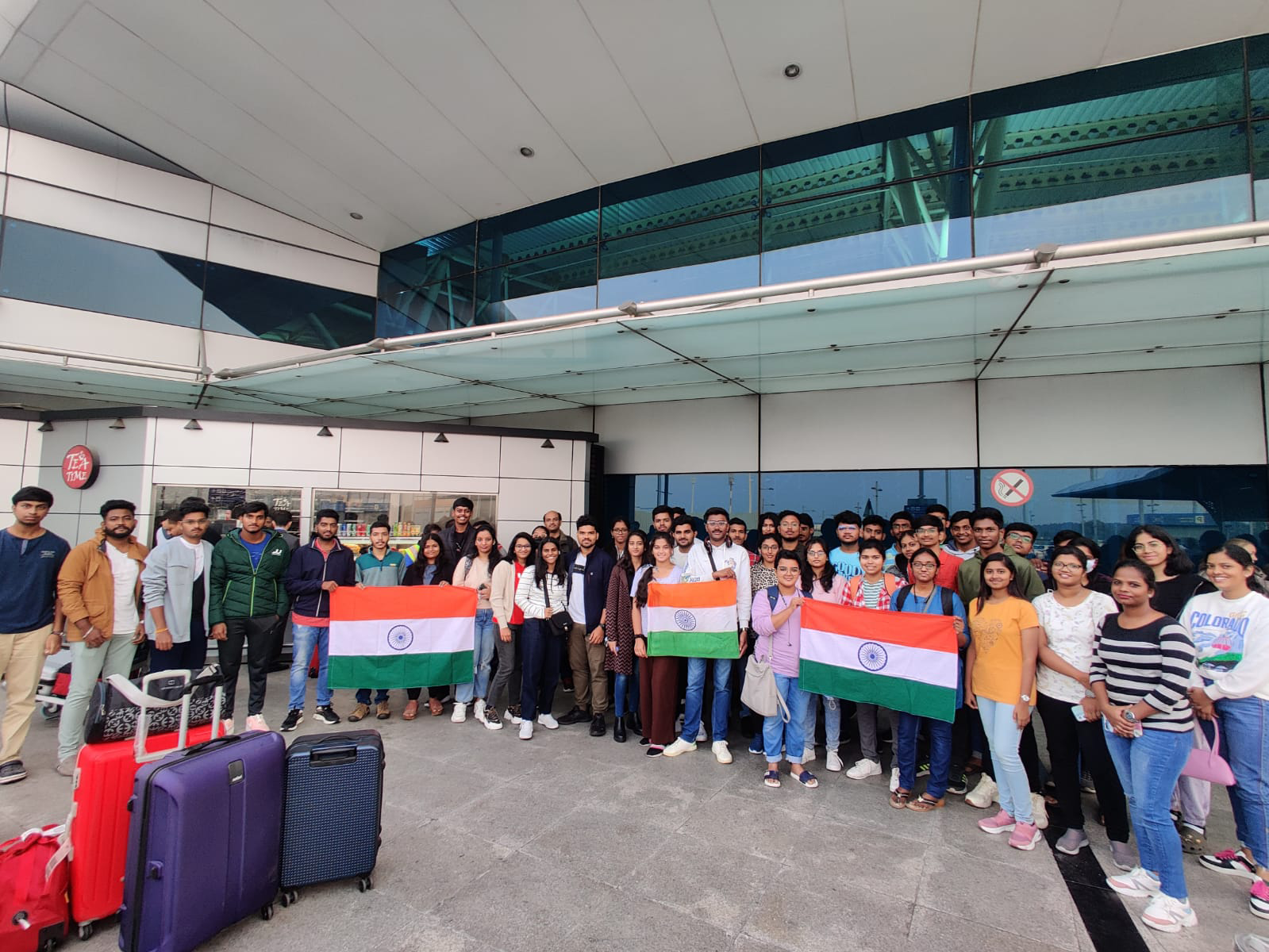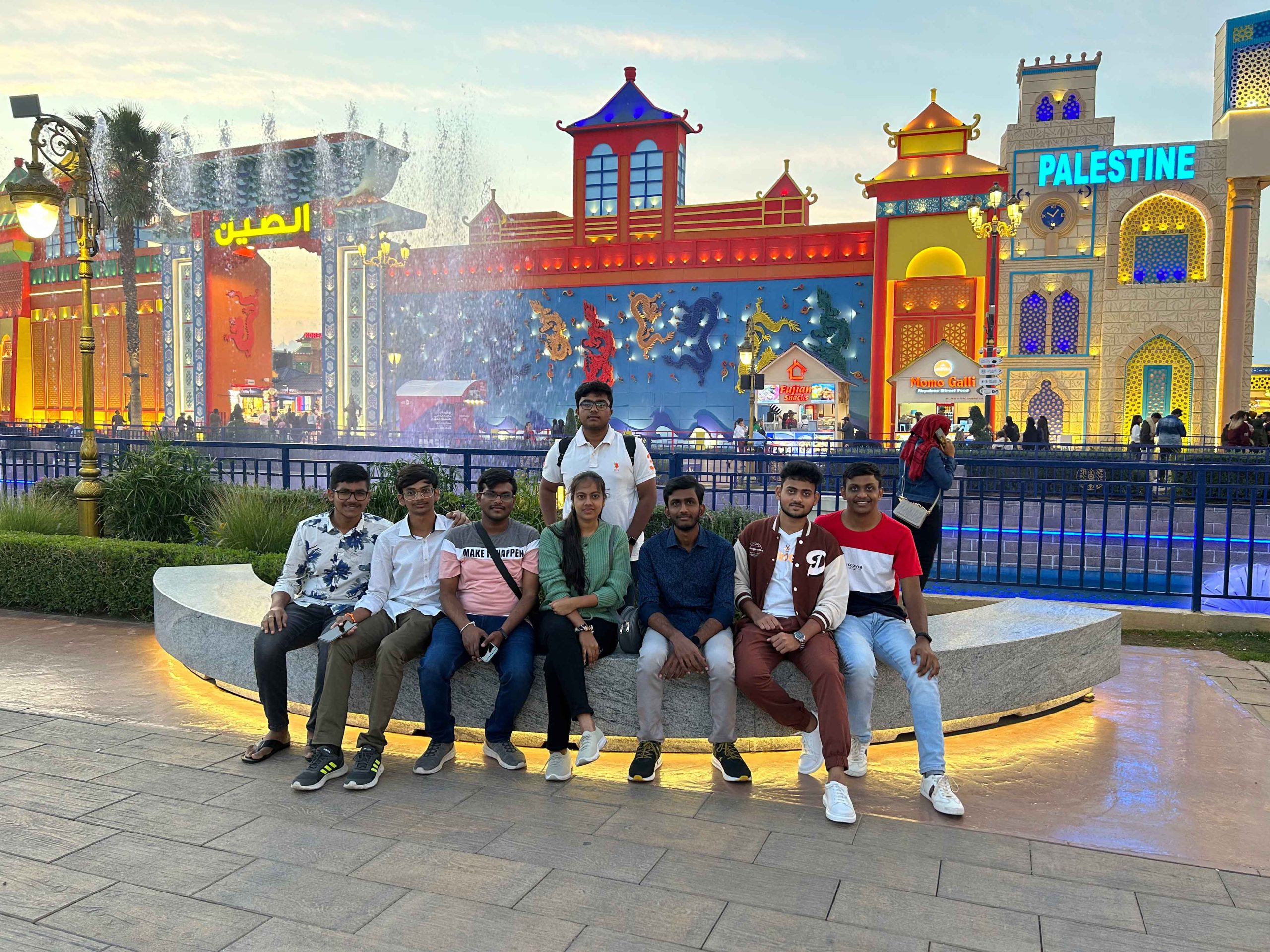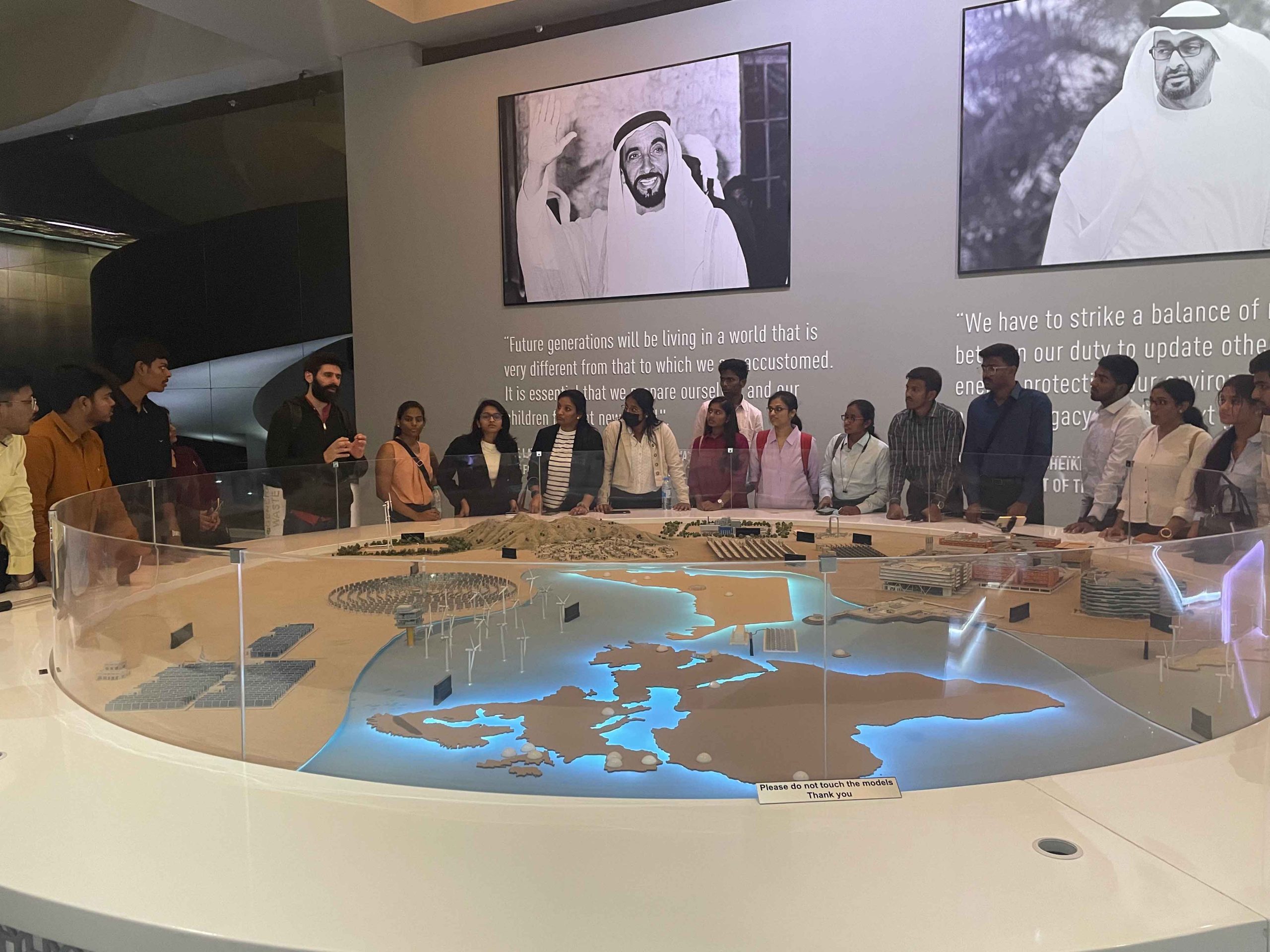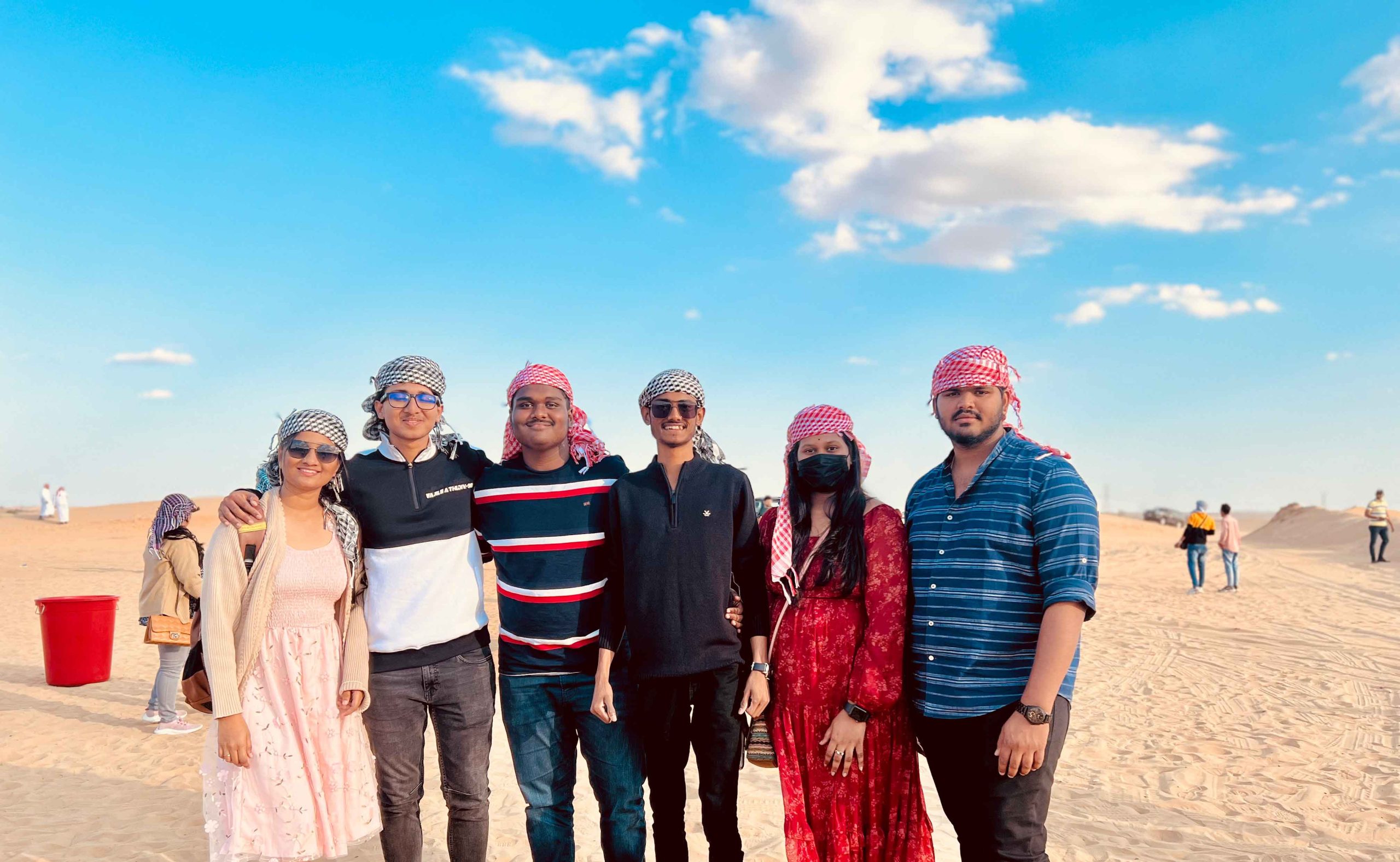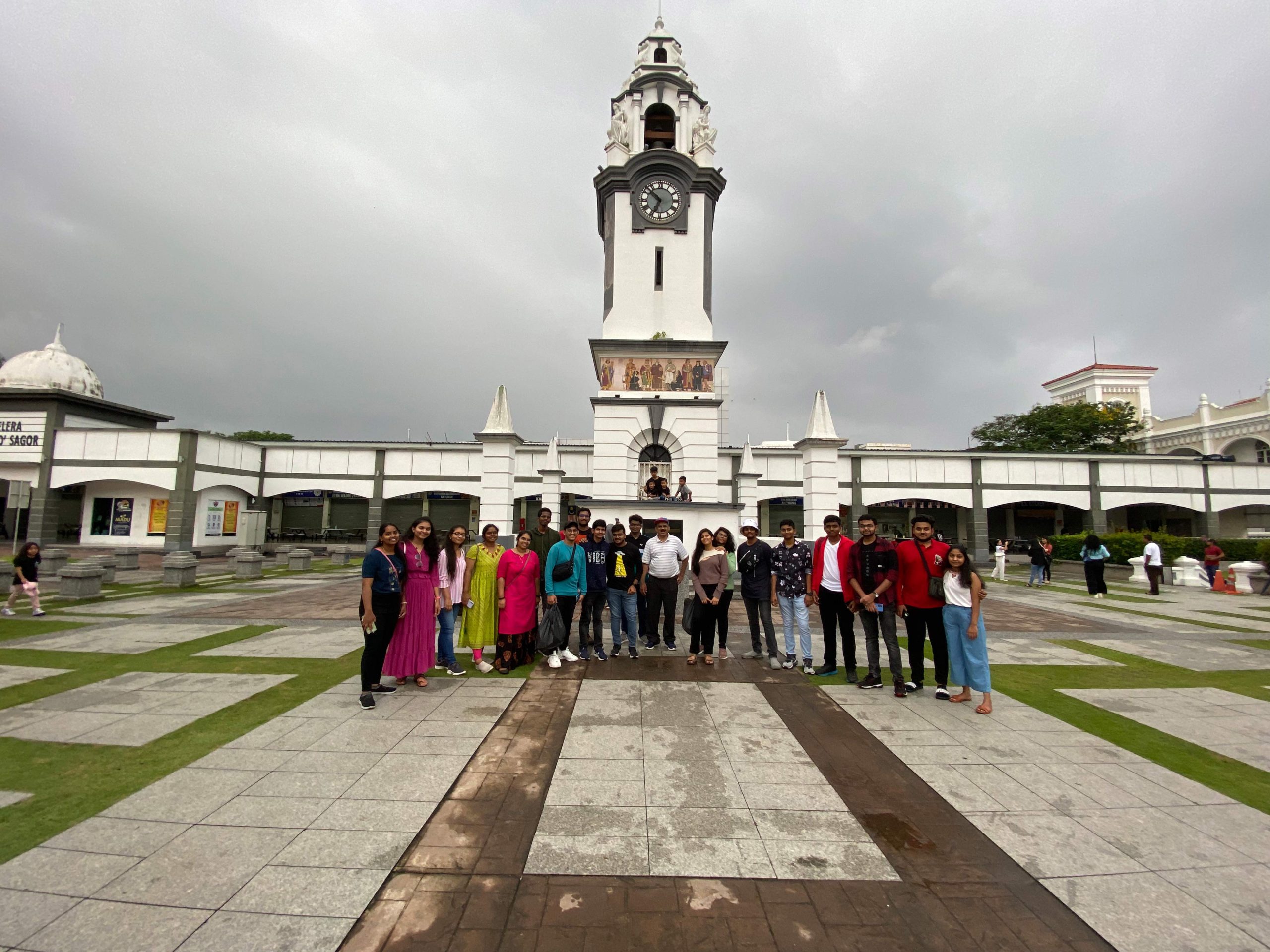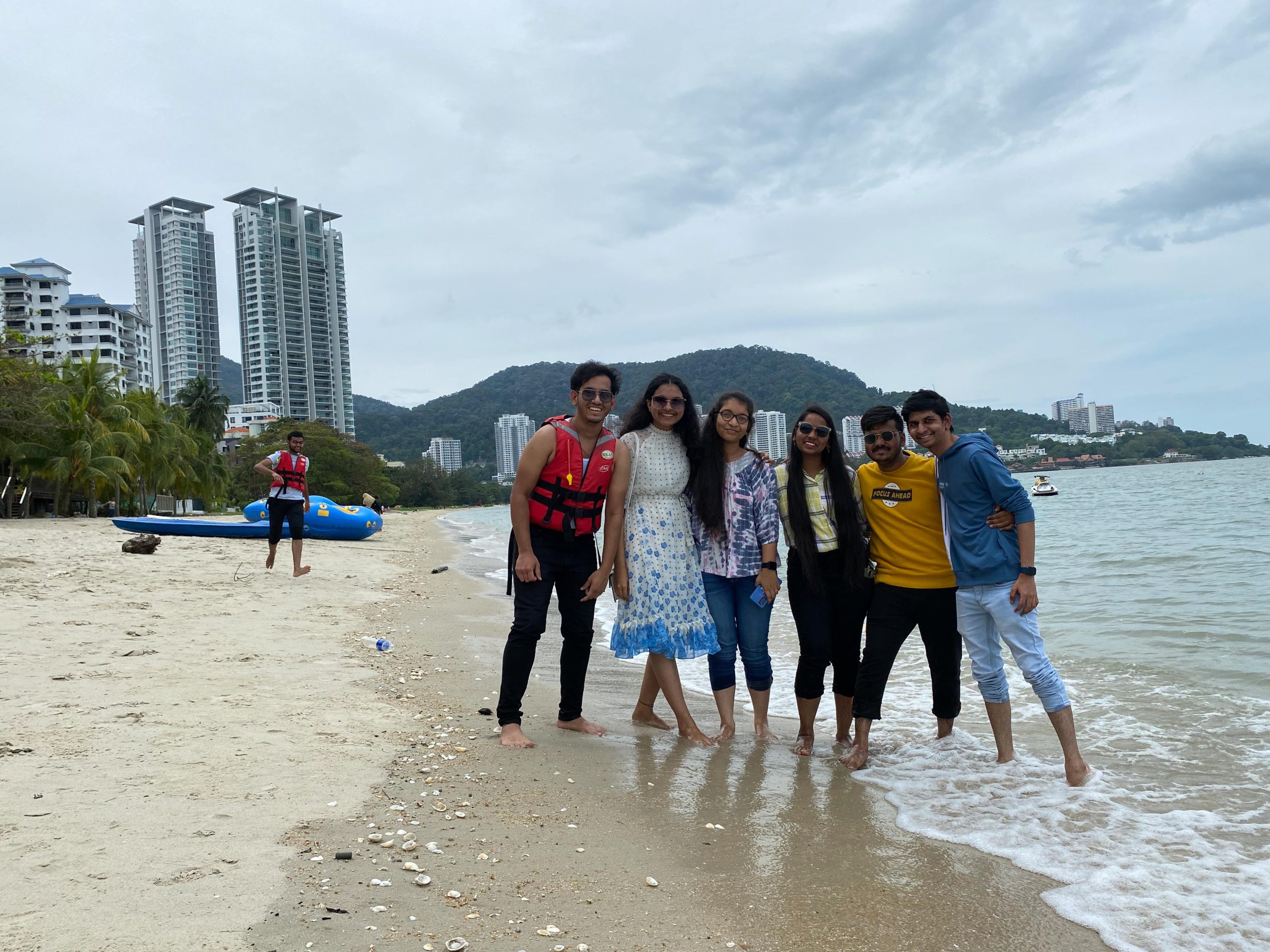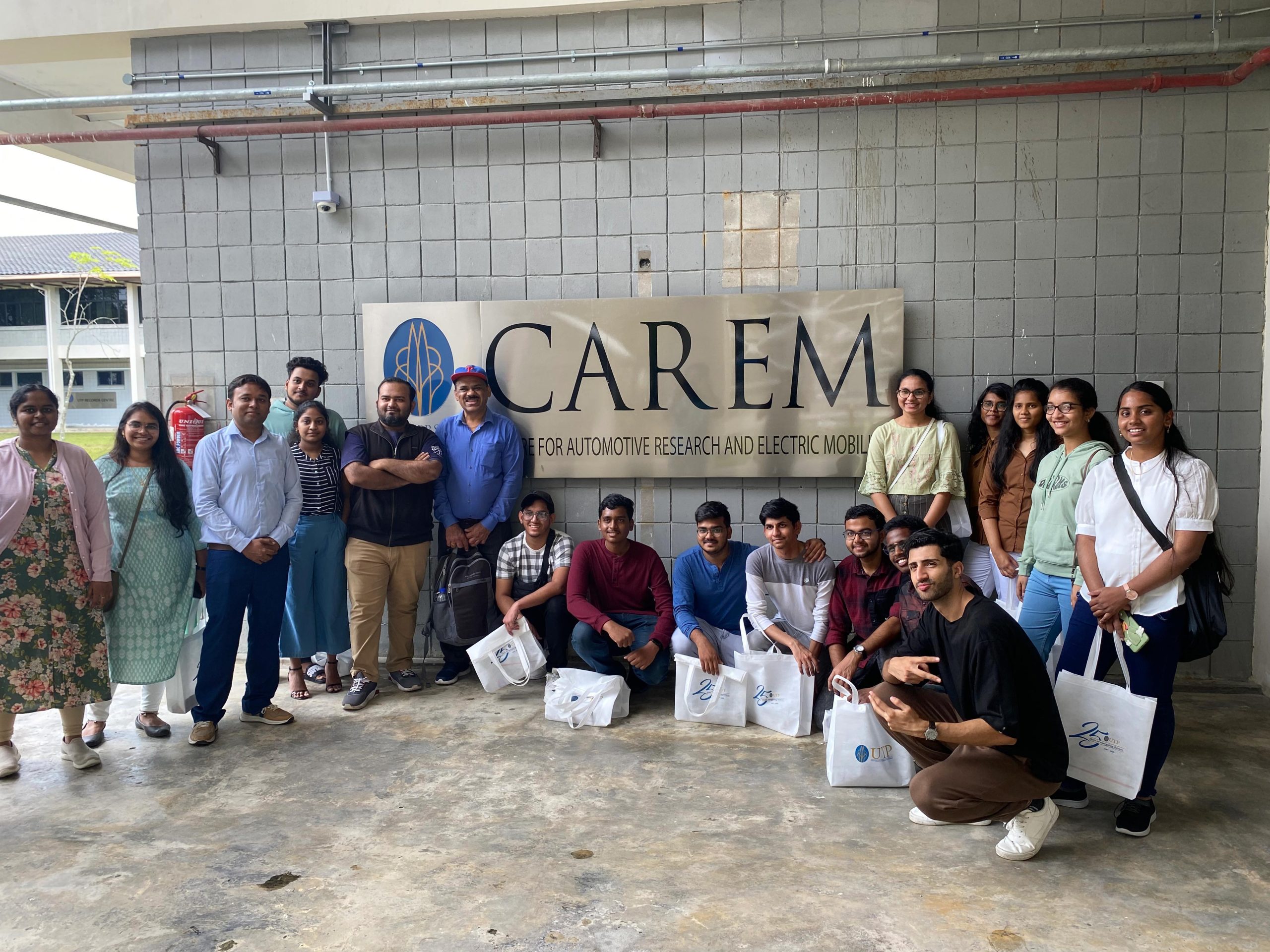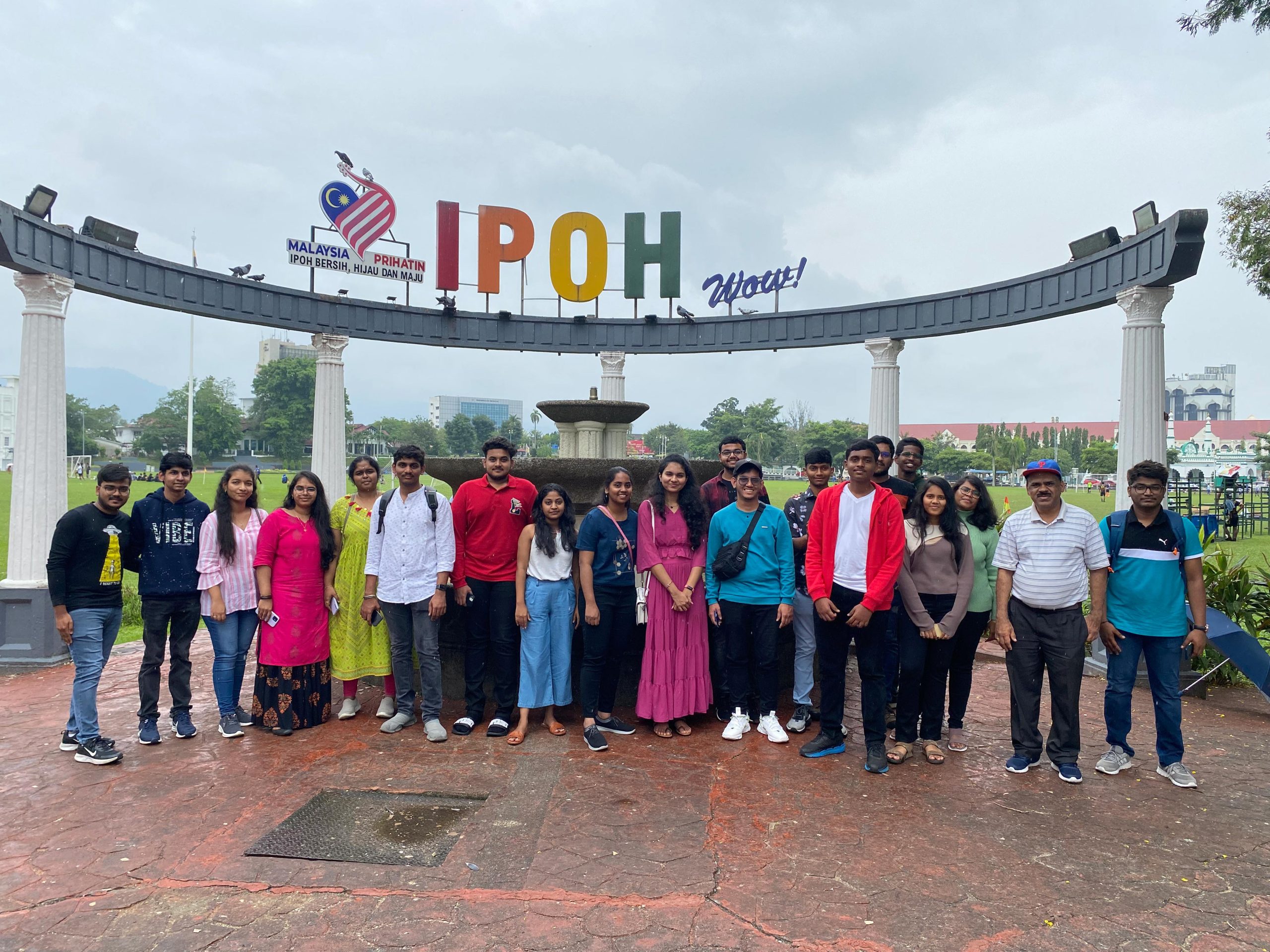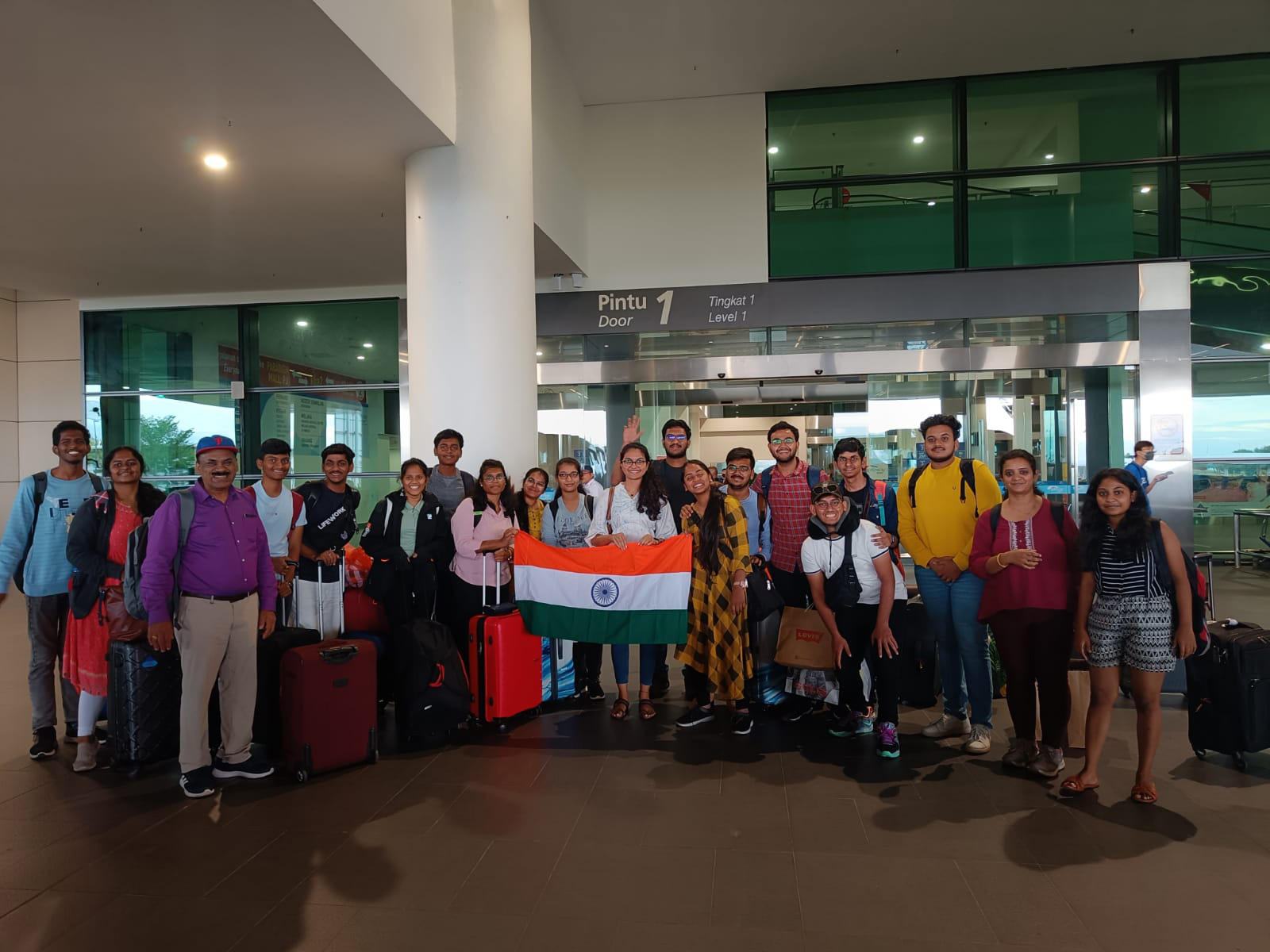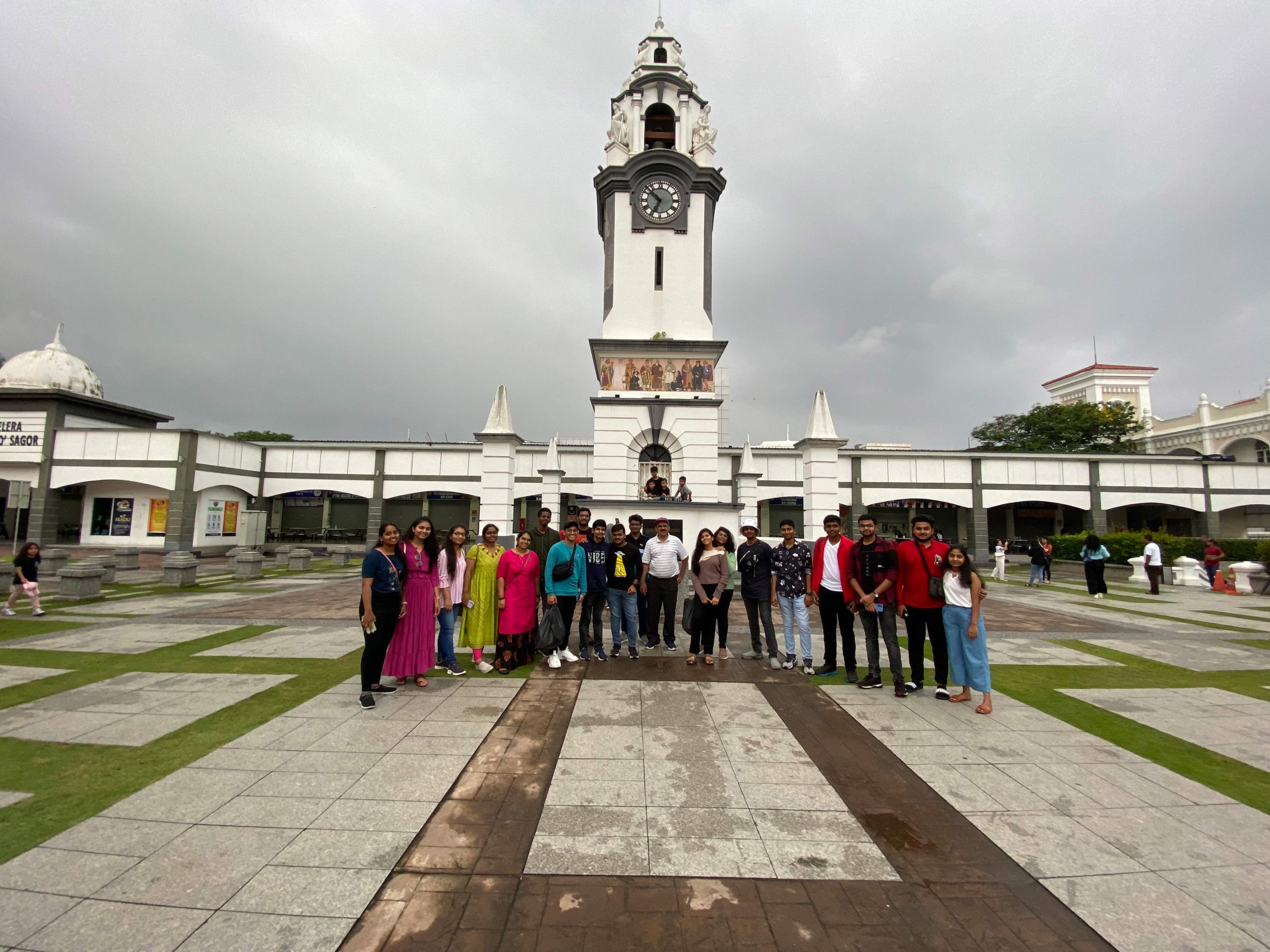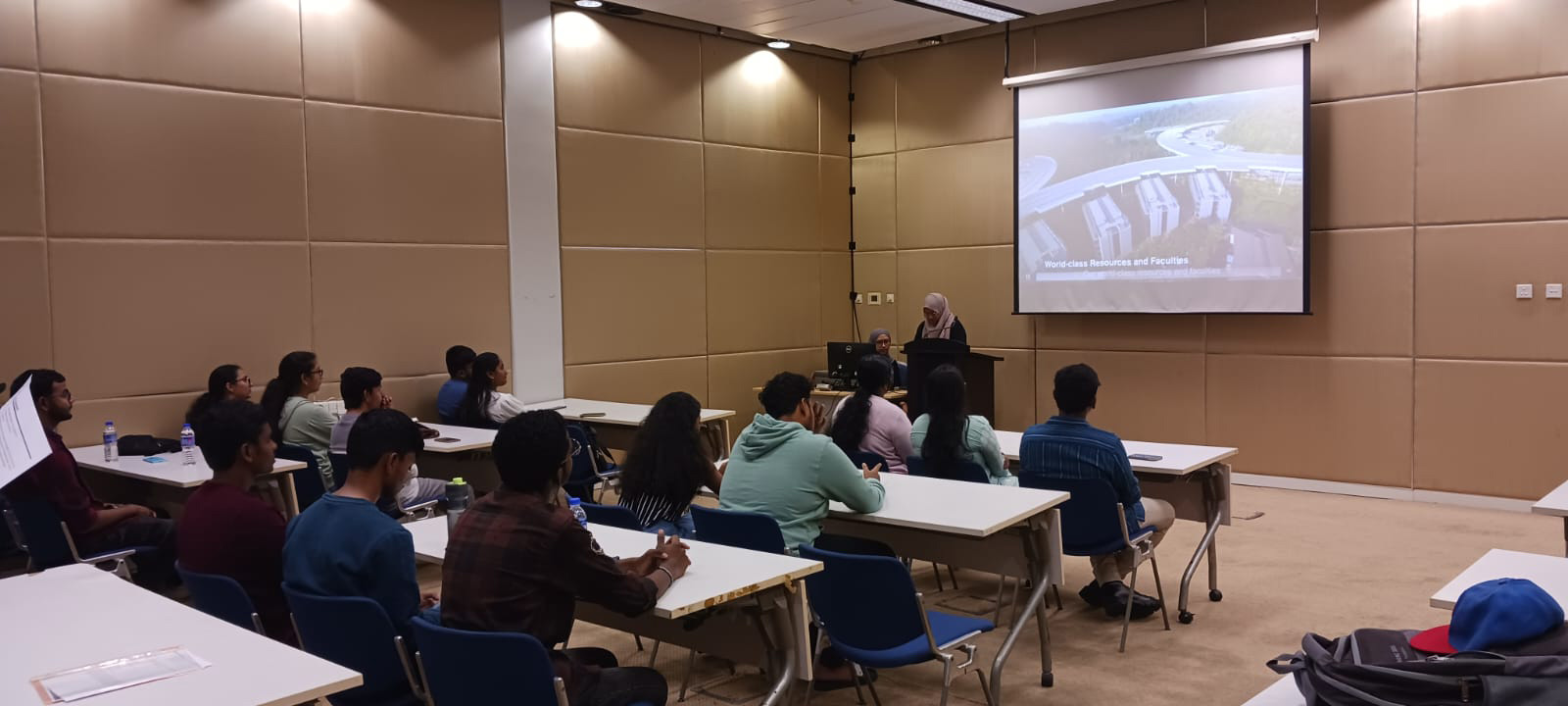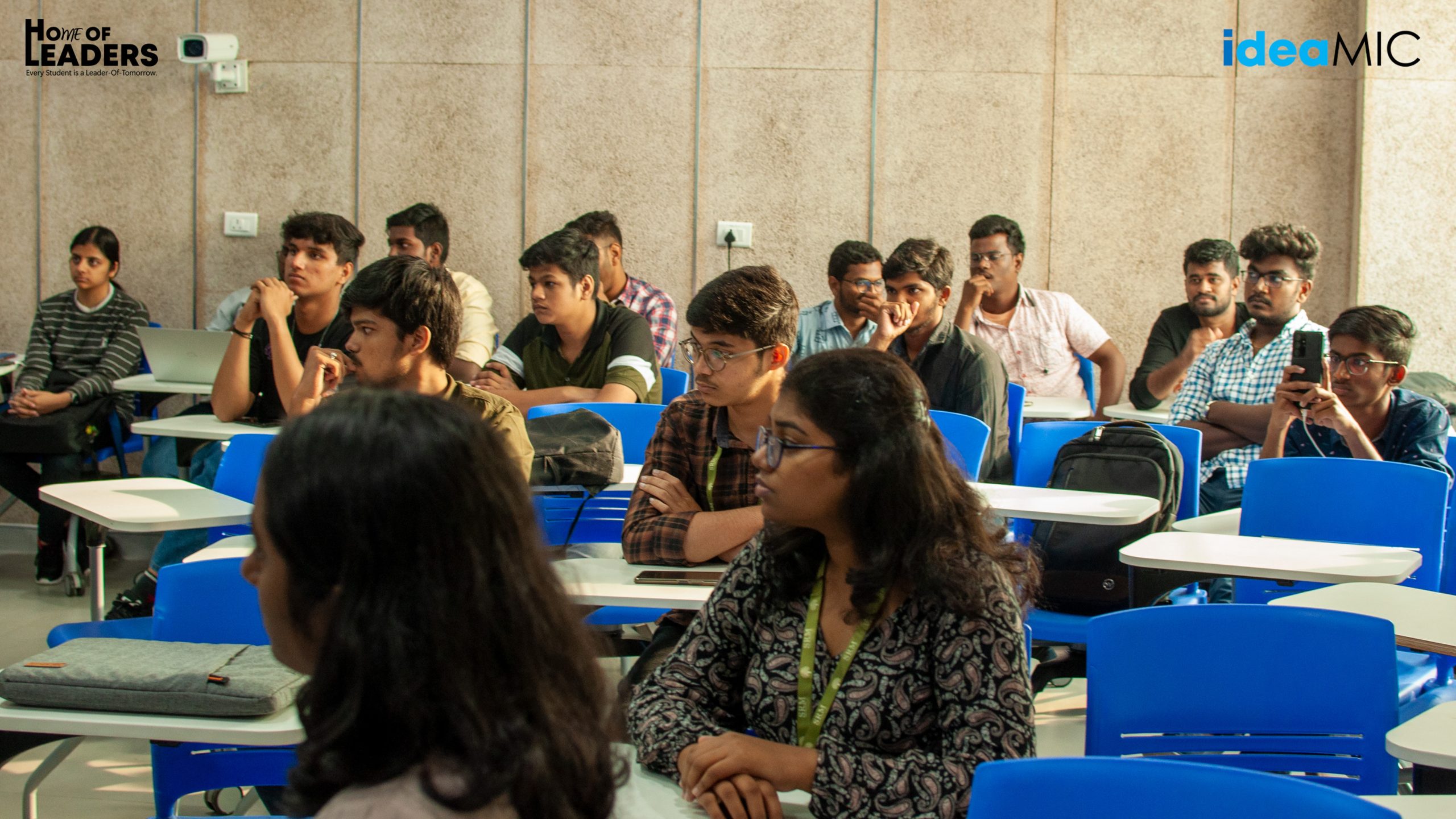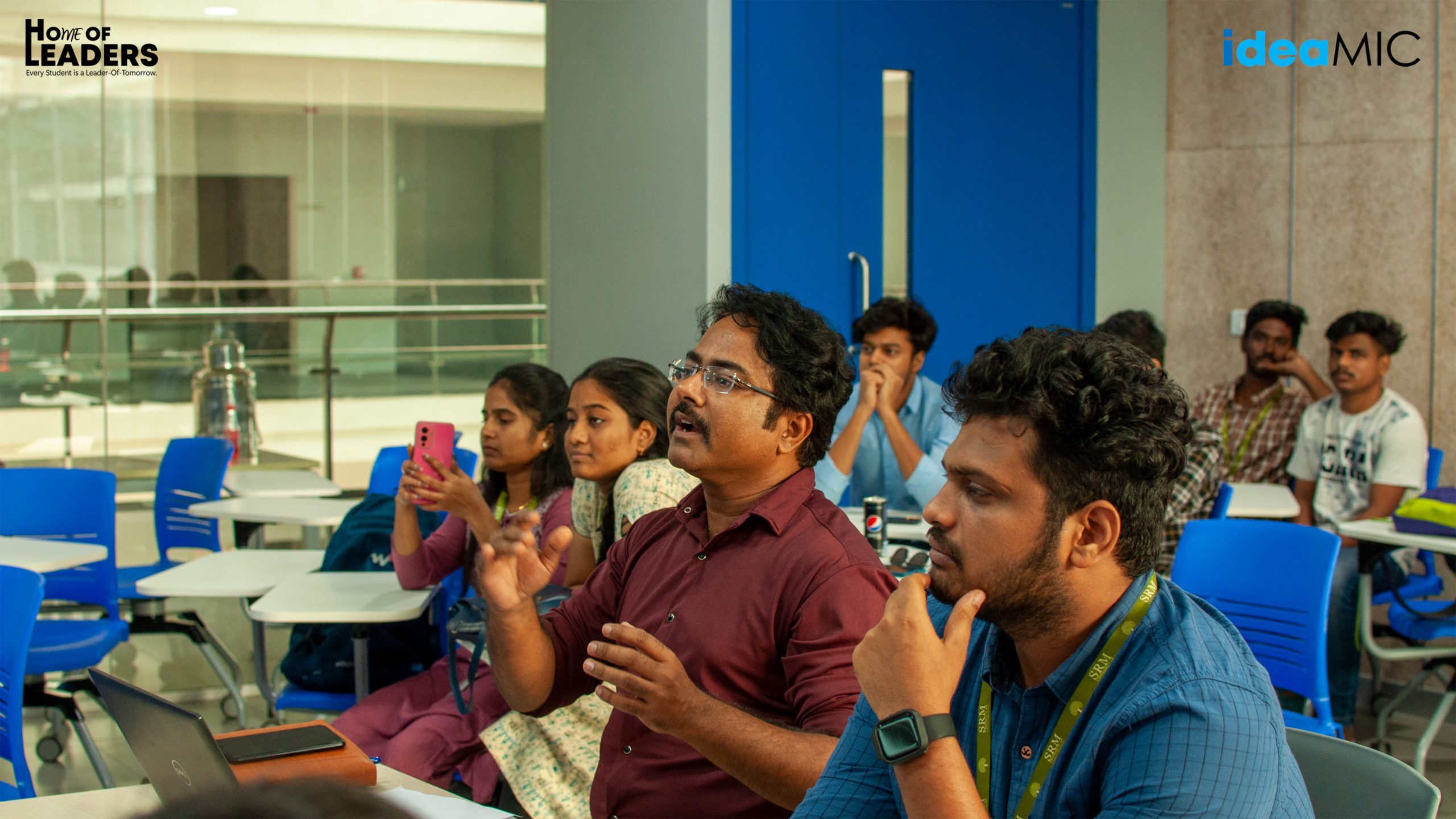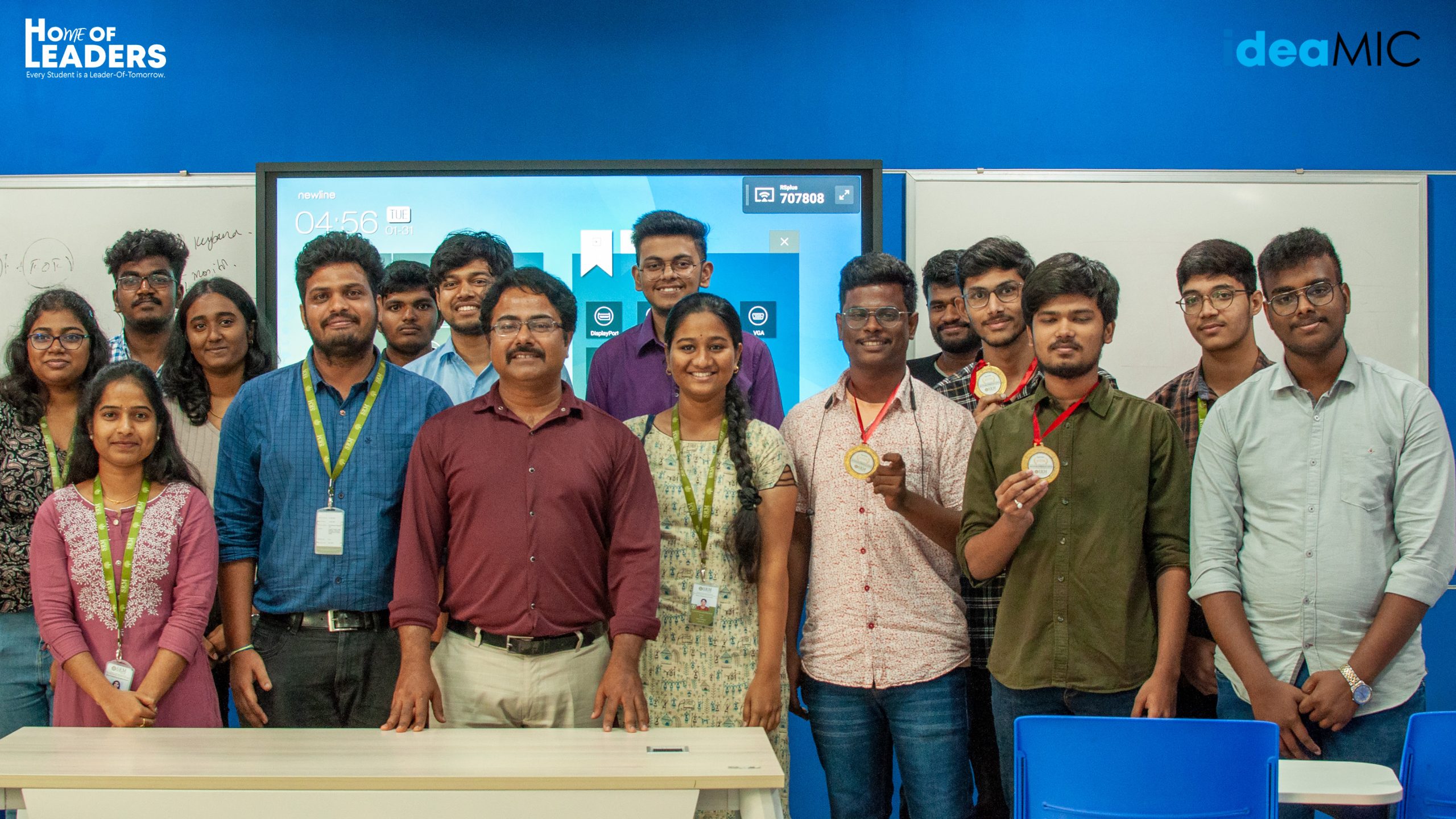SRM-AP All News
ALL News
- SRM University-AP Ranked India’s Third Best Private University in Nature Index Ranking February 20, 2023
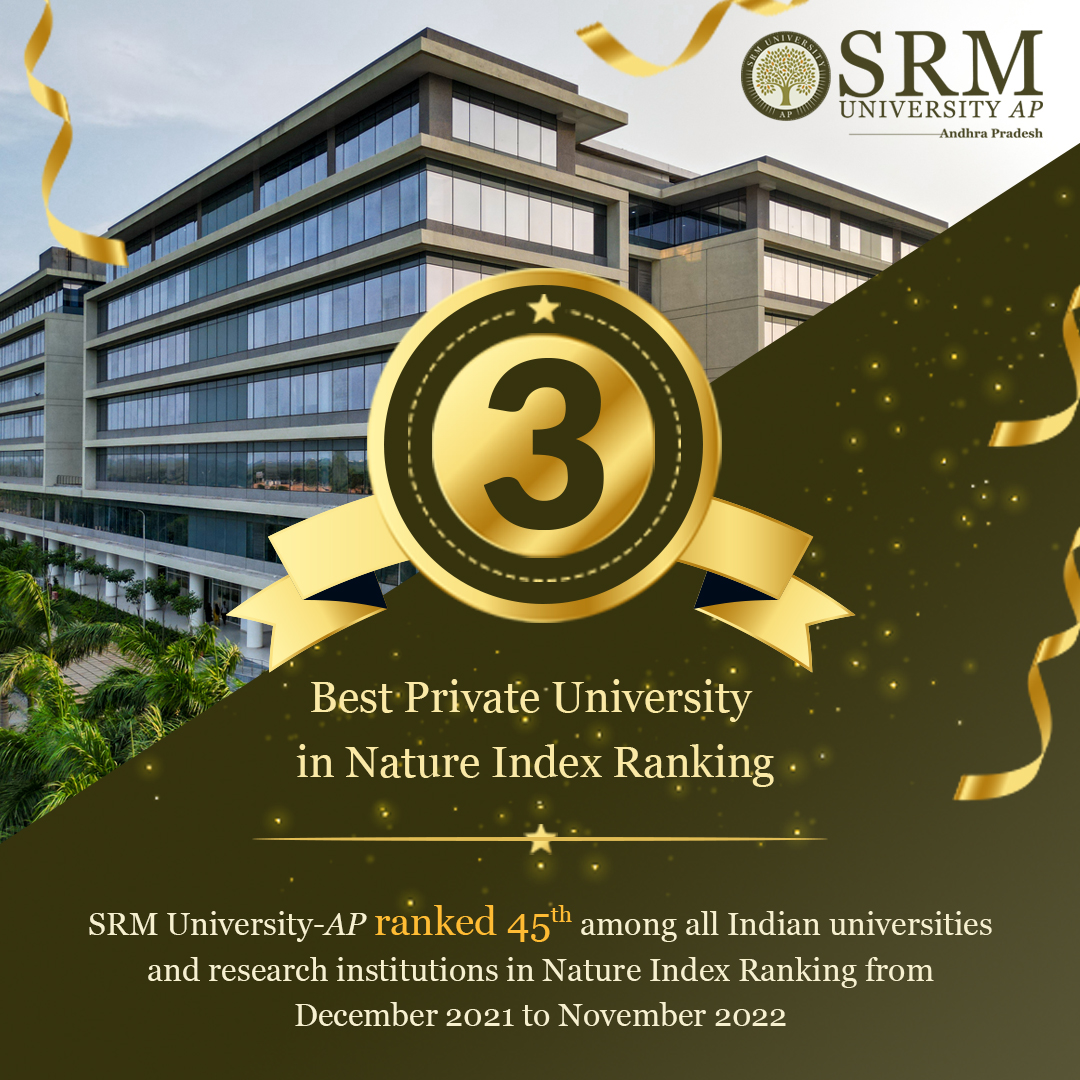 The Nature Index Publications rankings for the previous year are out, and SRM University-AP ranks 3rd among all the private universities in India. The five-year-old university stands 45th among all universities and research institutions in India. With 11 quality research publications, the university stood on top of the rankings from December 2021 to November 2022. Prof. Ranjit Thapa, Dr Shoji Thottathil, Dr Mahesh Ravva, Dr Amit Chakraborty, Dr Pankaj Bhalla, and Dr Nimai Mishra of SRM University-AP are the faculty who contributed to this incredible achievement through their high-quality research endeavours.
The Nature Index Publications rankings for the previous year are out, and SRM University-AP ranks 3rd among all the private universities in India. The five-year-old university stands 45th among all universities and research institutions in India. With 11 quality research publications, the university stood on top of the rankings from December 2021 to November 2022. Prof. Ranjit Thapa, Dr Shoji Thottathil, Dr Mahesh Ravva, Dr Amit Chakraborty, Dr Pankaj Bhalla, and Dr Nimai Mishra of SRM University-AP are the faculty who contributed to this incredible achievement through their high-quality research endeavours.Dr P Sathyanarayanan, Pro-Chancellor of SRM University-AP, extended his heartiest congratulations to the faculty members, research scholars and administrators. “Once again, SRM AP proved how it is bound to be one of the best research-oriented universities in India”, added Prof. Manoj K Arora, Vice Chancellor of SRM AP. “SRM University-AP is making great efforts to strengthen its research facilities significantly and is poised to become the No.1 private university in nature index publications ranking a few years from now”, said Prof. D Narayana Rao, Pro-Vice-Chancellor of SRM AP.
The Nature Index tracks the affiliations of universities and research article contributions in a selected group of 82 high-profile scientific journals chosen by an independent panel of expert research scientists in different fields. Ranking criteria involve counting the number of published research articles by institutions in renowned publishing groups. The Nature Index provides absolute Count and fractional Share counts of article publications at the institutional and national levels and, as such, is an indicator of global high-quality research output and collaborations. SRM AP has a count of 11 publications, and the share of SRM AP is 4.16.
Each year, Nature Index ranks the leading institutions, which can be companies, universities, government agencies, research institutes, NGOs, and countries, by the number of scientific articles and papers published in leading journals. The ranking involves research fields, such as life sciences, chemical sciences, physical sciences, and earth sciences. The Index helps assess research excellence by institutions, regions, and research disciplines.
Continue reading → - Excellence Through Learning: SRM University-AP Launched the Paari School of Business February 20, 2023
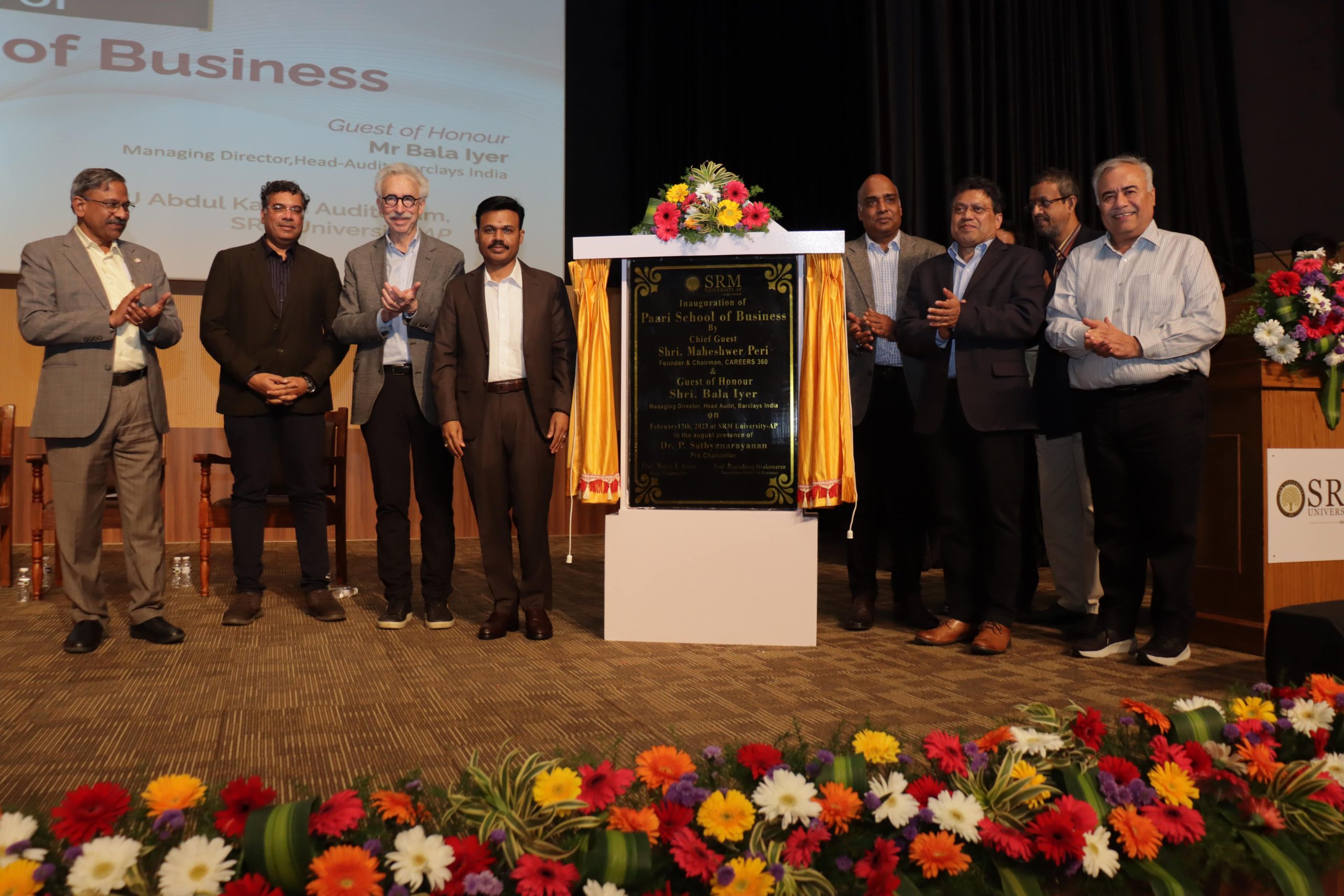 SRM University-AP launched the Paari School of Business at an illustrious event held on Friday, February 17, 2023. The new-age B-School that dwells with the motto, Excellence through Learning, has been launched by the Chief Guest, Mr Maheshwer Peri, Founder & Chairman of CAREERS 360, in the august presence of the Guest of Honour, Mr Bala Iyer, Manager Director, Head-Audit, Barclays India; Dr P Sathyanarayanan, Pro-Chancellor of SRM University-AP; and Prof. Manoj K Arora, Vice Chancellor of SRM University-AP. Members of the Governing Body of SRM University-AP; Dr Nicholas Dirks, Emeritus Chancellor, the University of California, Berkeley, US; and Dr Prasant Mohapatra, Vice-Chancellor for Research, University of California, Davis, US, graced the occasion with their distinguished presence.
SRM University-AP launched the Paari School of Business at an illustrious event held on Friday, February 17, 2023. The new-age B-School that dwells with the motto, Excellence through Learning, has been launched by the Chief Guest, Mr Maheshwer Peri, Founder & Chairman of CAREERS 360, in the august presence of the Guest of Honour, Mr Bala Iyer, Manager Director, Head-Audit, Barclays India; Dr P Sathyanarayanan, Pro-Chancellor of SRM University-AP; and Prof. Manoj K Arora, Vice Chancellor of SRM University-AP. Members of the Governing Body of SRM University-AP; Dr Nicholas Dirks, Emeritus Chancellor, the University of California, Berkeley, US; and Dr Prasant Mohapatra, Vice-Chancellor for Research, University of California, Davis, US, graced the occasion with their distinguished presence.“Just like Paari, the philanthropist king who offered his chariot for the jasmine creeper to climb up, SRM University-AP would like to give anything it takes for the education of students around the world”, said Dr P Sathyanarayanan, Pro-Chancellor of SRM AP, while expressing why Paari was the chosen name for the B-School expounding beyond its relation to the founder Chancellor Dr T R Paarivendhar. The event started with the dignitaries lighting the lamp. Prof. Bharadhwaj Sivakumaran, Dean-Paari School of Business, elaborated on the school’s motto. Prof. Manoj K Arora, Vice Chancellor of SRM AP, delivered the welcome address. The event also hosted the launching of one new Directorate and two new Centres of Excellence proposed by the Paari School of Business.
Dr Nicholas Dirks, the Governing body member of SRM AP, launched the Directorate of Executive Education and Professional Studies (DEEPS), a brand-new initiative of the school. DEEPS aspires to conduct customised management and executive development programmes for working professionals in the industry. It also intends to map internal competencies and industry requirements and facilitate programmes for mutual benefit.
The Centre for Consumer Research in India, another promising initiative of the school, has been launched by the Governing body member of SRM AP, Dr Prasant Mohapatra, Vice-Chancellor for Research, University of California, Davis, US. The centre will facilitate India-centric consumer research to disseminate knowledge on consumers in the country. Short-term courses on Consumer Behaviour in India for interested participants, consulting projects on Consumer Behaviour for interested companies and policy initiatives for concerned stakeholders are the main objectives of the centre.
Mr Atul Tripathi, Ex consultant, Big Data & AI, NSCS-PMO, launched the Centre for AI&UNSDG. The centre aims to be one of the unique organisations in India promoting UN Sustainable Development Goals among various stakeholders, fostering research revolving around AI and UN SDGs and disseminating the knowledge derived. The dignitaries were honoured with mementoes and awards at the end of the ceremony. Dr R Premkumar, Registrar of SRM AP, delivered the vote of thanks.
Continue reading → - Electrical Engineering – Your Way Forward! February 14, 2023
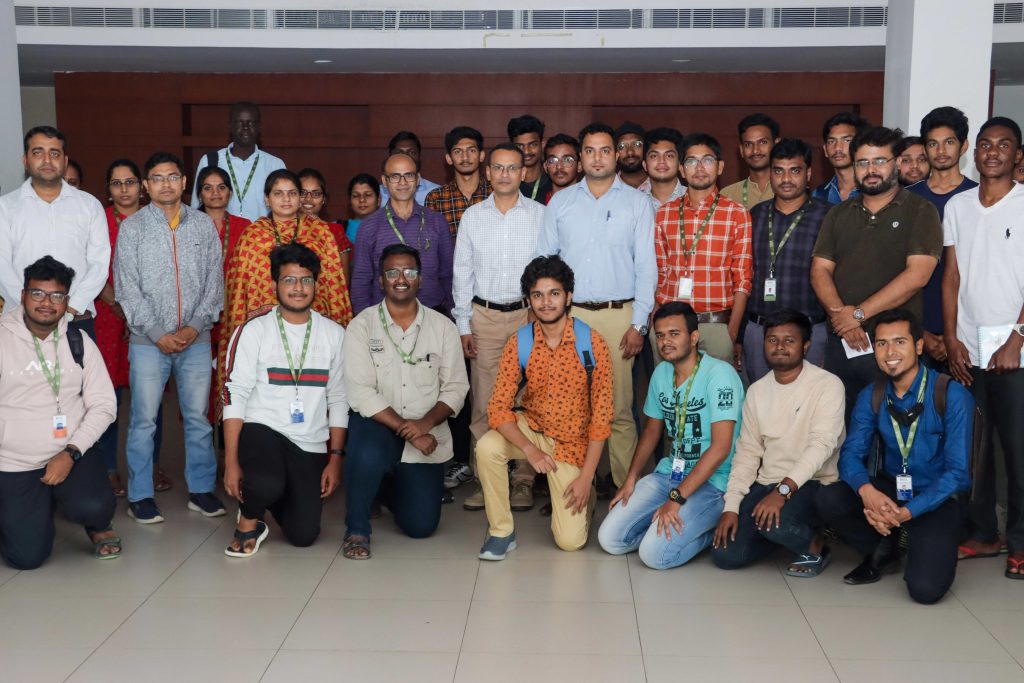
Electrical and Electronic Engineering is a core engineering course in the market with an aspiring number of students securing admissions to reputed universities. Yet with the advent of the modern software era, the dilemma of future job opportunities for Electrical Engineers has been buzzing around the students of the field. The Power & Control Society, Department of Electrical and Electronic Engineering organised an invited talk on February 02, 2023, on “Career Opportunities for Electrical Engineers” to empower and enlighten young graduates on potential career prospects in the field. Prof. Praveen Kumar of Electrical Engineering, Indian Institute of Technology, Guwahati was the distinguished speaker of the session.
Some of the frequently asked questions among Electrical Engineers are whether selecting Electrical Engineering as a core course instead of other engineering streams for their BTech degree was the right choice and whether it would hinder their career opportunities in this ever- transitioning job market. Nowadays, the engineering field is dominated by software and its application. It is quite evident that most jobs lie in the software or IT sectors, focusing more on coding and programming instead of our core streams.
Prof. Praveen Kumar addressed this pressing situation and reassured students that selecting the EEE stream was the right choice with it being an important core stream in the field of Engineering and giving flavour to understanding the physics behind the engineering model. He has addressed with examples of how such knowledge plays a major role when relating to other fields in any sector of the industry whether in assembling, production, AI, innovation etc. Prof. Kumar talked about coding and programming, reading syntax, and explained the importance of AI today, and how it plays an important role in engineering analysis such as Control theory, Electrical machines, Power electronics, Power systems etc. Prof. Kumar also highlighted different aspects of the transformation of the Nationwide EV ecosystem in India and encouraged students to learn various aspects of EV and solutions – To think and analyse the problem to create, innovate and present solutions per the market trend.
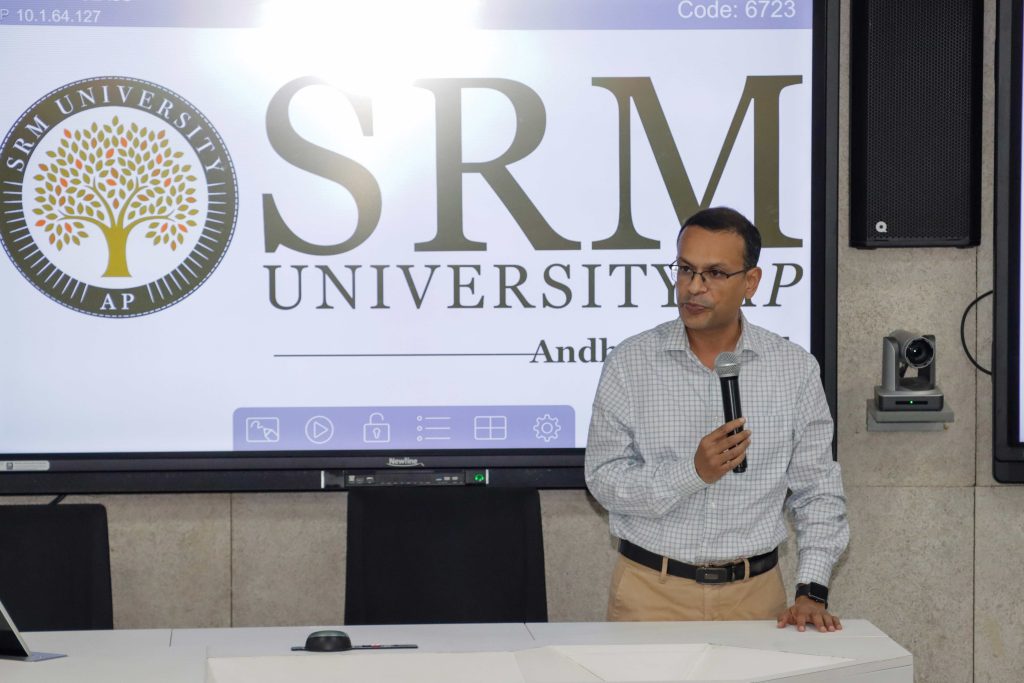
About the Speaker
A distinguished academician from the Indian Institute of Technology, Guwahati, Professor Praveen Kumar had completed his MTech from the Indian Institute of Technology, New Delhi. He was conferred with PhD from the Delft University of Technology, The Netherlands and is an expert in the fields of Electric Vehicles, Wireless Power Transmission and Electrical Machines.
Continue reading → - UMMI Indonesia Immersion Programme: Enriching Global Perceptions February 14, 2023
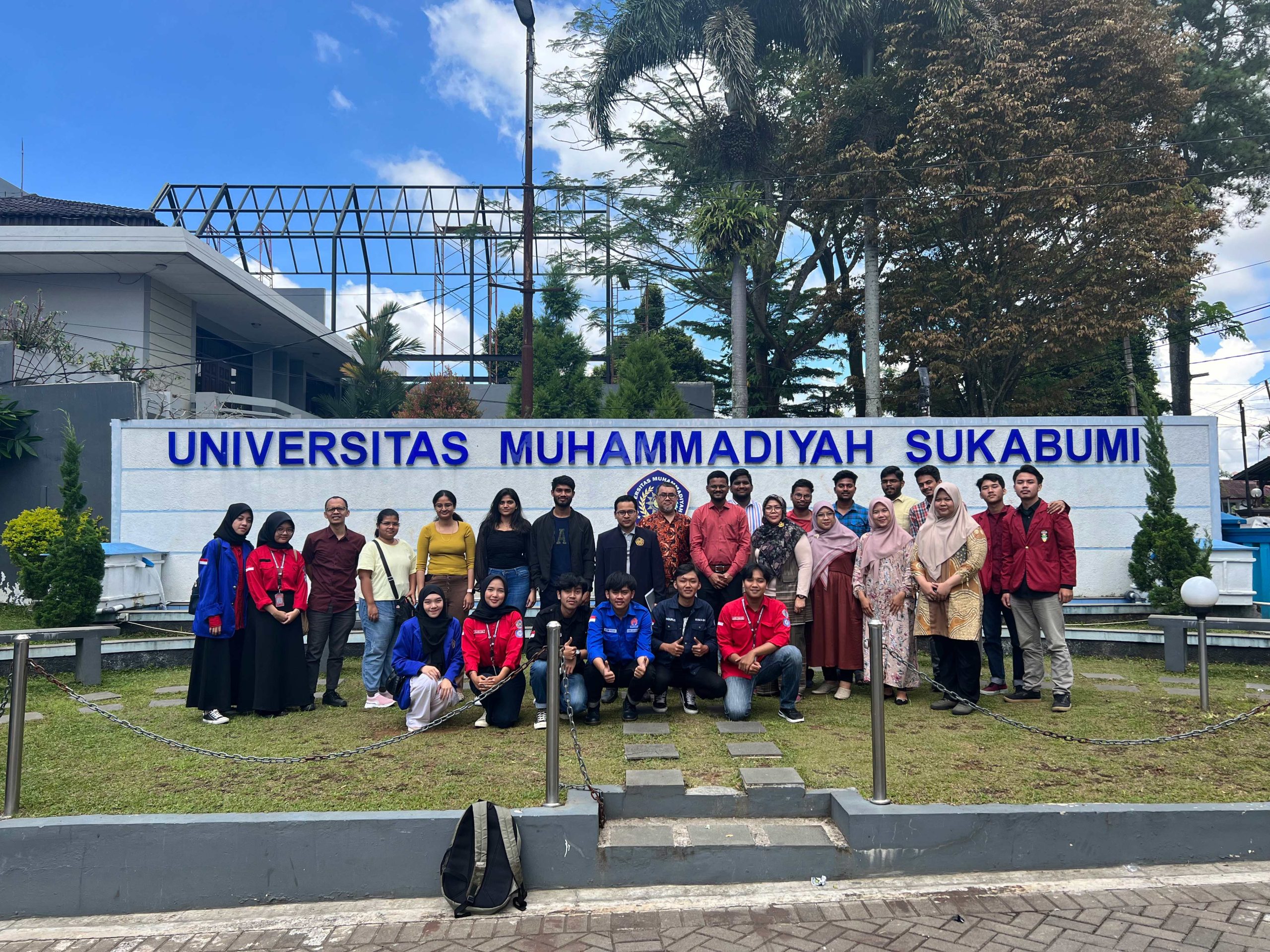 The UMMI Indonesia Immersion Programme has been successfully completed by the Directorate of International Relations & Higher Studies in collaboration with Universitas Muhammadiyah Sukabumi. The ten-day global immersion programme featured nine students and one staff member from January 19 to January 28, 2023.
The UMMI Indonesia Immersion Programme has been successfully completed by the Directorate of International Relations & Higher Studies in collaboration with Universitas Muhammadiyah Sukabumi. The ten-day global immersion programme featured nine students and one staff member from January 19 to January 28, 2023.A grand opening and closing ceremony were held for the students of SRM AP. A short course on Bahasa Language, Indonesian Economics, and PencakSilat-Martial Arts was done as part of the programme. Sessions with Science & Technology, Law, Administrative Sciences, and Humanities departments were also conducted. A tour of the most pleasant and historically significant areas of Sukabumi, an excursion to the UNESCO Global GeoparkCiletuh, an exploration of Jakarta, a Soccer competition etc., were the other attractions of the programme.
Students got to experience the hosting country’s rich history and cultural diversity, unique foods, and languages while being accompanied by its warm and welcoming people.
Continue reading → - Discourses on Accelerating Startups Across the Country February 13, 2023
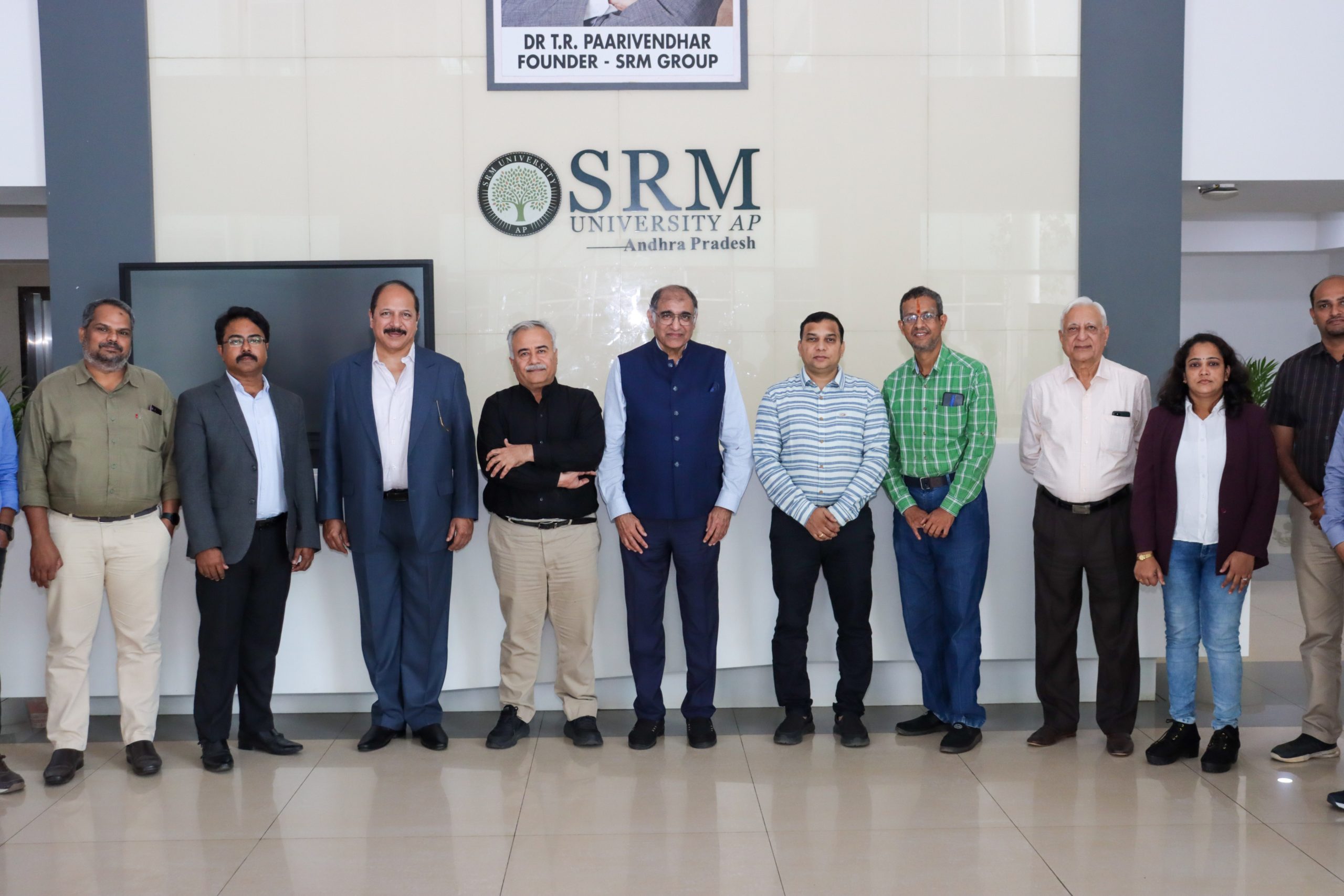 Delegates from across India and other countries participated in the First steering committee meeting held at SRM University-AP to accelerate startups in the country. The Chairperson of the committee, Prof. Manoj K Arora, Vice Chancellor of SRM AP, spearheaded the discussion in designing a blueprint to stir up the startup ecosystem of the university and Andhra Pradesh. Mr Udayan Bakshi, CEO of Hatchlab Research Centre and Associate Director of the Directorate of Innovation & Entrepreneurship, SRM AP, hosted the meeting.
Delegates from across India and other countries participated in the First steering committee meeting held at SRM University-AP to accelerate startups in the country. The Chairperson of the committee, Prof. Manoj K Arora, Vice Chancellor of SRM AP, spearheaded the discussion in designing a blueprint to stir up the startup ecosystem of the university and Andhra Pradesh. Mr Udayan Bakshi, CEO of Hatchlab Research Centre and Associate Director of the Directorate of Innovation & Entrepreneurship, SRM AP, hosted the meeting.Shri Anil Tentu, CEO of AP Innovation Society, also graced the occasion with his brilliant insights into technology transfer. He also shared his thoughts on implementing COEs in cutting-edge technologies across the state to make Andhra Pradesh the leader in startups in the country.
Continue reading →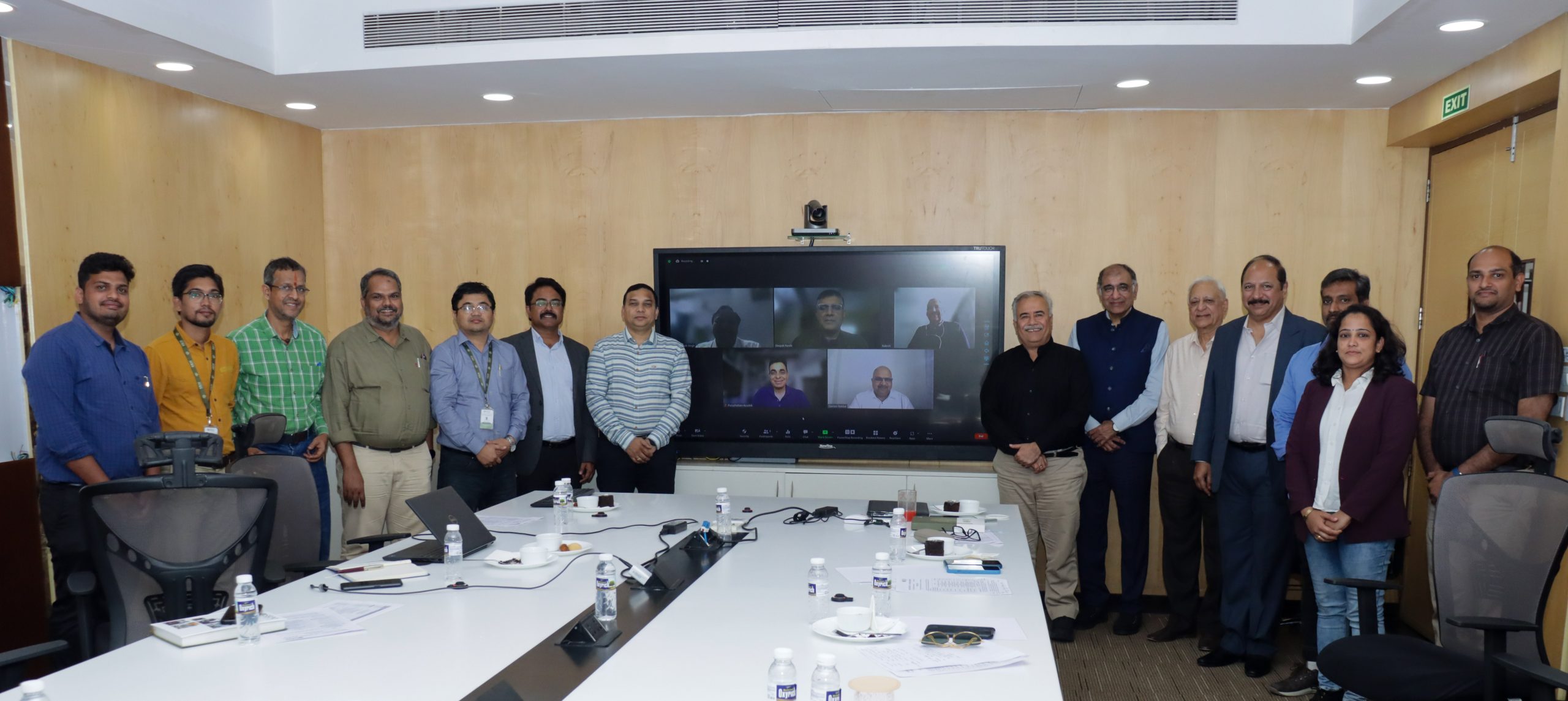 Notable industry leaders who participated in the meeting were Shri Purushottam Kaushik, Head, Centre for Fourth Industrial Revolution, World Economic Forum India; Dr Dinesh Dua, Chairman CII North India Committee on LifeSciences; Shri. Sameer Babbar, Principal Mentor SVB Group Melbourne; Prof. Yatindra Nath Singh, Chairman CEMMC, IIT Kanpur; Prof. Deepak Pandit, Chair Profession- Innovation and Entrepreneurship, BML Munjal University; Shri Sanjiv Bhavnani, Founder of Mentorpreneur & Infotecniques; Shri. Rakesh Sharma, Advisor TERI; and Prof. V K Nangia, Policy maker and Professor of excellence for many institutes. Deans, professors, and researchers from SRM AP also participated in the meeting, bringing the best practices and methods to accelerate the startups in the country.
Notable industry leaders who participated in the meeting were Shri Purushottam Kaushik, Head, Centre for Fourth Industrial Revolution, World Economic Forum India; Dr Dinesh Dua, Chairman CII North India Committee on LifeSciences; Shri. Sameer Babbar, Principal Mentor SVB Group Melbourne; Prof. Yatindra Nath Singh, Chairman CEMMC, IIT Kanpur; Prof. Deepak Pandit, Chair Profession- Innovation and Entrepreneurship, BML Munjal University; Shri Sanjiv Bhavnani, Founder of Mentorpreneur & Infotecniques; Shri. Rakesh Sharma, Advisor TERI; and Prof. V K Nangia, Policy maker and Professor of excellence for many institutes. Deans, professors, and researchers from SRM AP also participated in the meeting, bringing the best practices and methods to accelerate the startups in the country. - Dubai Global Immersion Programme: Towards Global Knowledge and Exposure February 13, 2023
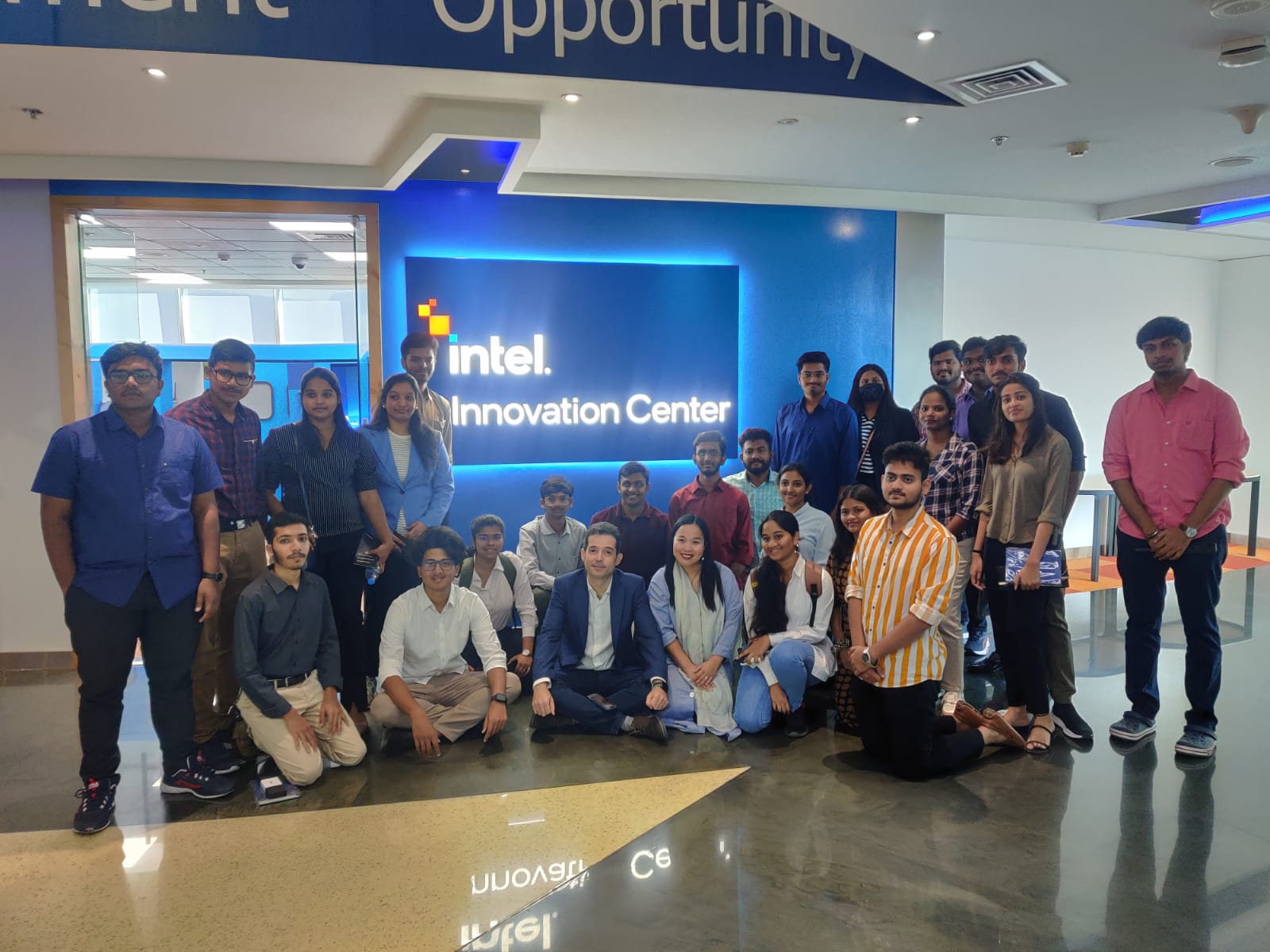 The Directorate of International Relations & Higher Studies successfully completed the Dubai Global Immersion Programme by collaborating with the Ureka Education Group from January 17 to January 23, 2023. The programme featured 49 students and two faculty/staff members and provided the opportunity to explore three cities in UAE: Dubai, Sharjah, and Abu Dhabi.
The Directorate of International Relations & Higher Studies successfully completed the Dubai Global Immersion Programme by collaborating with the Ureka Education Group from January 17 to January 23, 2023. The programme featured 49 students and two faculty/staff members and provided the opportunity to explore three cities in UAE: Dubai, Sharjah, and Abu Dhabi.Industry Visits to Gracia Group, Siemens HQ, Masdar Sustainable City in Abu Dhabi, Sharjah Research Technology & Innovation Park, Apple, Intel Innovation Centre, Global Village, and Fintech Hive in Dubai were the highlights of the programme. Students also attended short courses & workshops on Digital Marketing, social media, AI & #ML and 3D printing. They experienced the advanced infrastructure and technological advancements of the UAE. The Dubai immersion programme helped them overcome cultural, food, and diversity barriers. The one-week global immersion programme allowed them to understand, learn, and cope with global knowledge and technological developments.
Continue reading → - Global Immersion Programme at UTP Malaysia: Rendering Diverse Learning Experiences February 8, 2023
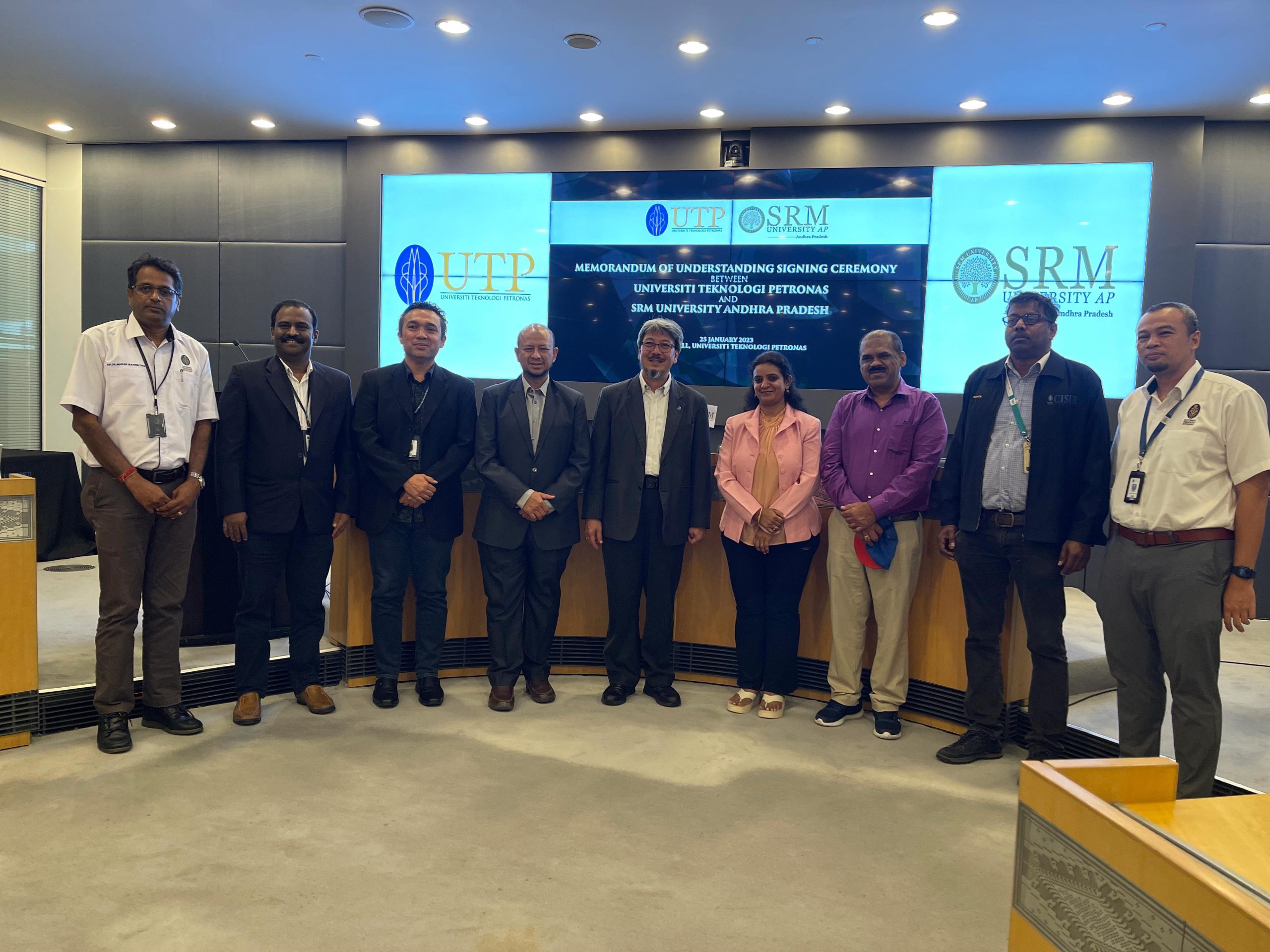 Engagement with different environments, cultures and economies helps students to create links and expand their reach across the map. The Directorate of International Relations & Higher Studies and Universiti Teknologi PETRONAS collaborated to conduct the 10-day Global Immersion Programme from January 19 to January 28, 2023. An MoU inking ceremony between the two institutions was also held during the programme, featuring 17 students and two faculty members!
Engagement with different environments, cultures and economies helps students to create links and expand their reach across the map. The Directorate of International Relations & Higher Studies and Universiti Teknologi PETRONAS collaborated to conduct the 10-day Global Immersion Programme from January 19 to January 28, 2023. An MoU inking ceremony between the two institutions was also held during the programme, featuring 17 students and two faculty members!With other members, Dr Mohamed Ibrahim, Vice Chancellor, UTP Malaysia, and Dr Naga Swetha Pasupuleti, Associate Director, International Relations and Higher Studies, signed and exchanged the Memorandum of Understanding. “Participating in the Global Immersion programme will increase the Global Quotient in the students and helps them to become an empowered global citizen,” added the programme coordinator Mr Sandeep Samala while recalling the immersion programme.
Short courses on Latex, R Statistics, ESE, Energy Management & Data Reporting, Group presentations on the live projects, City tours of Kuala Lumpur, Ipoh, Penang, Little India, and Batu Caves, Photo sessions, Kayaking and Fun at UTP Campus were the highlights of the immersion programme.
Students of SRM AP enjoyed the local food, cultural diversity, and networking with the local students at UTP Malaysia. The short courses and project presentations, which are part of the programme, helped them deepen their knowledge in their respective areas of expertise. The short courses and project presentations helped students deepen their understanding of their respective areas of expertise.
Continue reading → - National-level Volleyball Competition at BITS Pilani: SRM University-AP Becomes the Champions February 8, 2023
 SRM University-AP won the national-level volleyball competition held at BITS Pilani Hyderabad campus from February 2 to February 5, 2023, as part of Arena 2023. In the finals held on Sunday, the Women’s Volleyball team of SRM University-AP won the trophy with a 3-0 scoreline against the St. Francis College for Women, Hyderabad.
SRM University-AP won the national-level volleyball competition held at BITS Pilani Hyderabad campus from February 2 to February 5, 2023, as part of Arena 2023. In the finals held on Sunday, the Women’s Volleyball team of SRM University-AP won the trophy with a 3-0 scoreline against the St. Francis College for Women, Hyderabad.Arena is an annual national-level sports festival of BITS Pilani, Hyderabad campus, for university-level students. Arena 2023 competitions were held in the first week of February 2023. Bhavishya, the team captain of SRM AP’s Women’s Volleyball team, co-players Jhansi, Anishka, and others showed immaculate talent and brought the team to the shores of victory.
Similarly, Nayan, a CSE student of SRM AP, bagged second place in the powerlifting competition in the 80 kg category. Nayan proved his talent and won the silver medal. T Vamsi coached the volleyball team under the guidance of Dr Vijay Kumar Upadhyay, Director of Sports and Abdul Mohimin, Assistant Director of Sports. The winners were felicitated by Pro-Chancellor Dr P Sathyanarayanan, Vice Chancellor Prof. Manoj K Arora, and Registrar Dr R Premkumar of SRM University-AP.
Continue reading → - Pitch and Win Contest by IdeaMIC: Lauding Idea and Innovation February 3, 2023
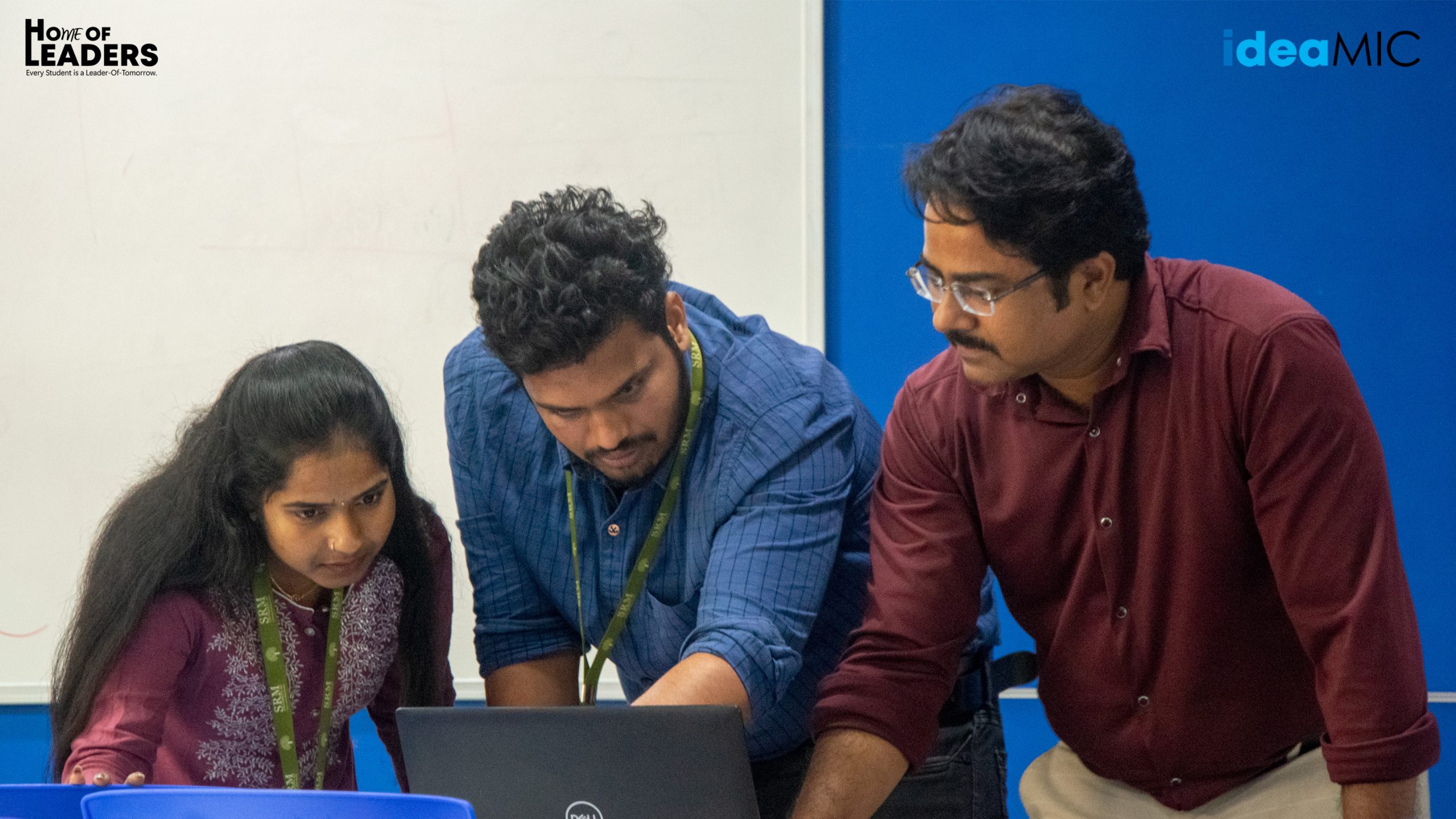 IdeaMIC, a student-led community under the Home of Leaders, an initiative of the Directorate of Innovation and Entrepreneurship, organised another successful Pitch & Win event on Tuesday, 31 January 2023. The main purpose of the programme is to encourage the student community to come up and pitch their ideas.
IdeaMIC, a student-led community under the Home of Leaders, an initiative of the Directorate of Innovation and Entrepreneurship, organised another successful Pitch & Win event on Tuesday, 31 January 2023. The main purpose of the programme is to encourage the student community to come up and pitch their ideas.Anand, a student of the Department of Electrical and Electronics Engineering, was among the top performers and received an additional cash prize of Rs. 5,000, along with a medal for proposing the best #idea of the month. Students Lokesh SatyaSai and Suhruth Ram secured the 2nd and 3rd positions, respectively. All participants who came up with innovative ideas received praise and invaluable feedback from the experts, along with a certificate of appreciation.
Continue reading → - Facilitating Physical Fitness and Athletic Glory! January 31, 2023
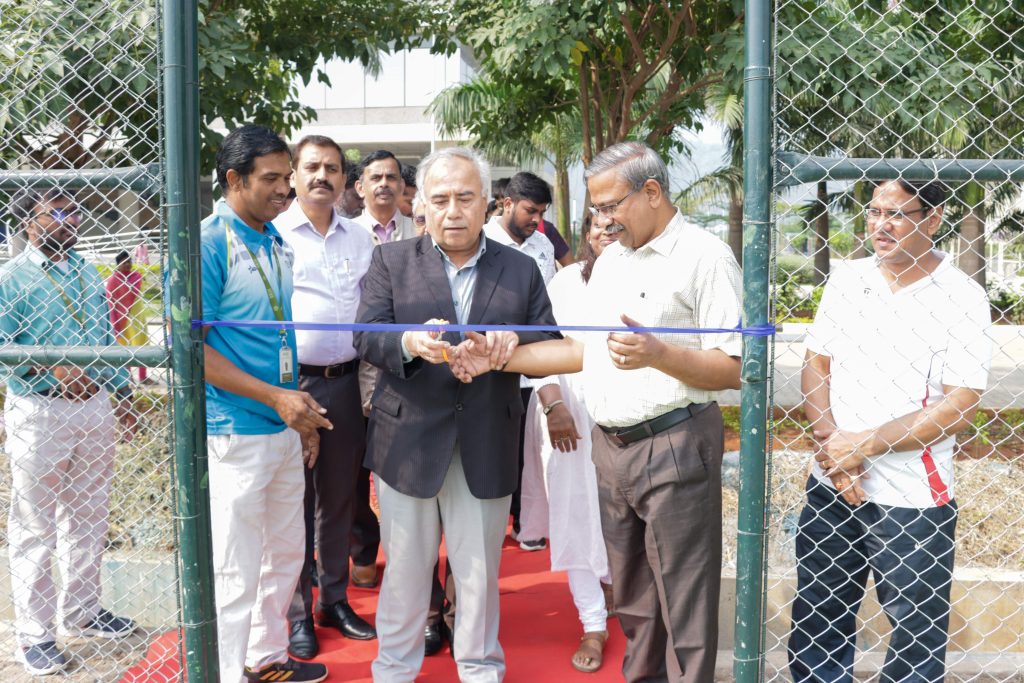
“Physical fitness is not only one of the most important keys to a healthy body, it is the basis of dynamic and creative intellectual activity.”
-John F. Kennedy
The Directorate of Sports of SRM University-AP, inaugurated the ‘‘Synthetic Tennis Court” accentuating the importance of physical fitness in everyday life and catering to rising tennis players with immense potential. Honourable Vice Chancellor, Prof. Manoj K Arora inaugurated the new court with a maiden game along with Registrar Dr R Premkumar, Director of Sports, Dr Vijay Kumar Upadhyay and Director of Communication, Mr Pankaj Belwariar. SRM AP aims at providing intensive quality training and world-class facilities for students with potential, encouraging and developing them into national and international athletes. The university showcases the significance of the seamless alignment of sports with academics to improve the physical and mental constitution of the students.
Continue reading →


